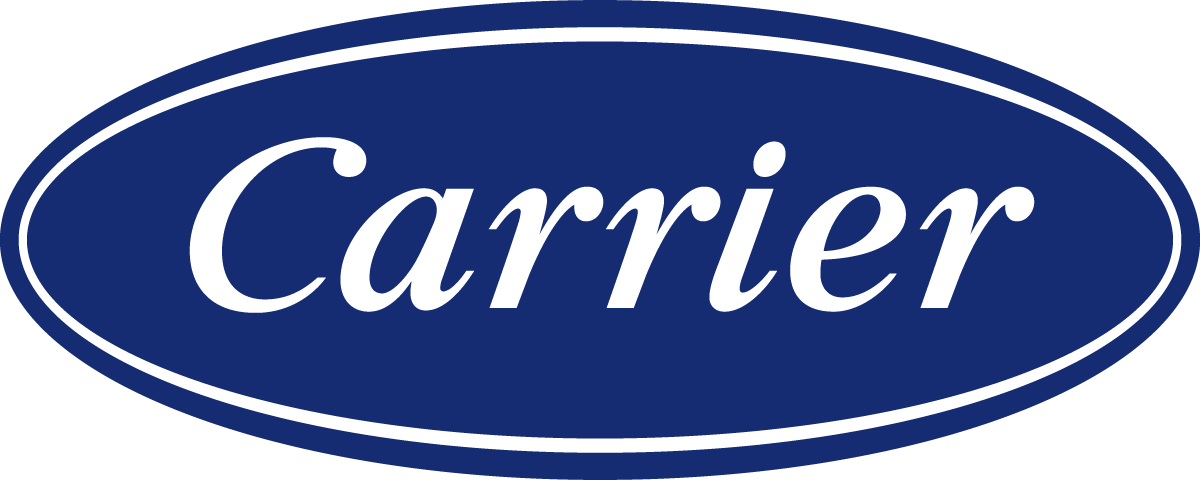Air Conditioner Design & Image Gallery
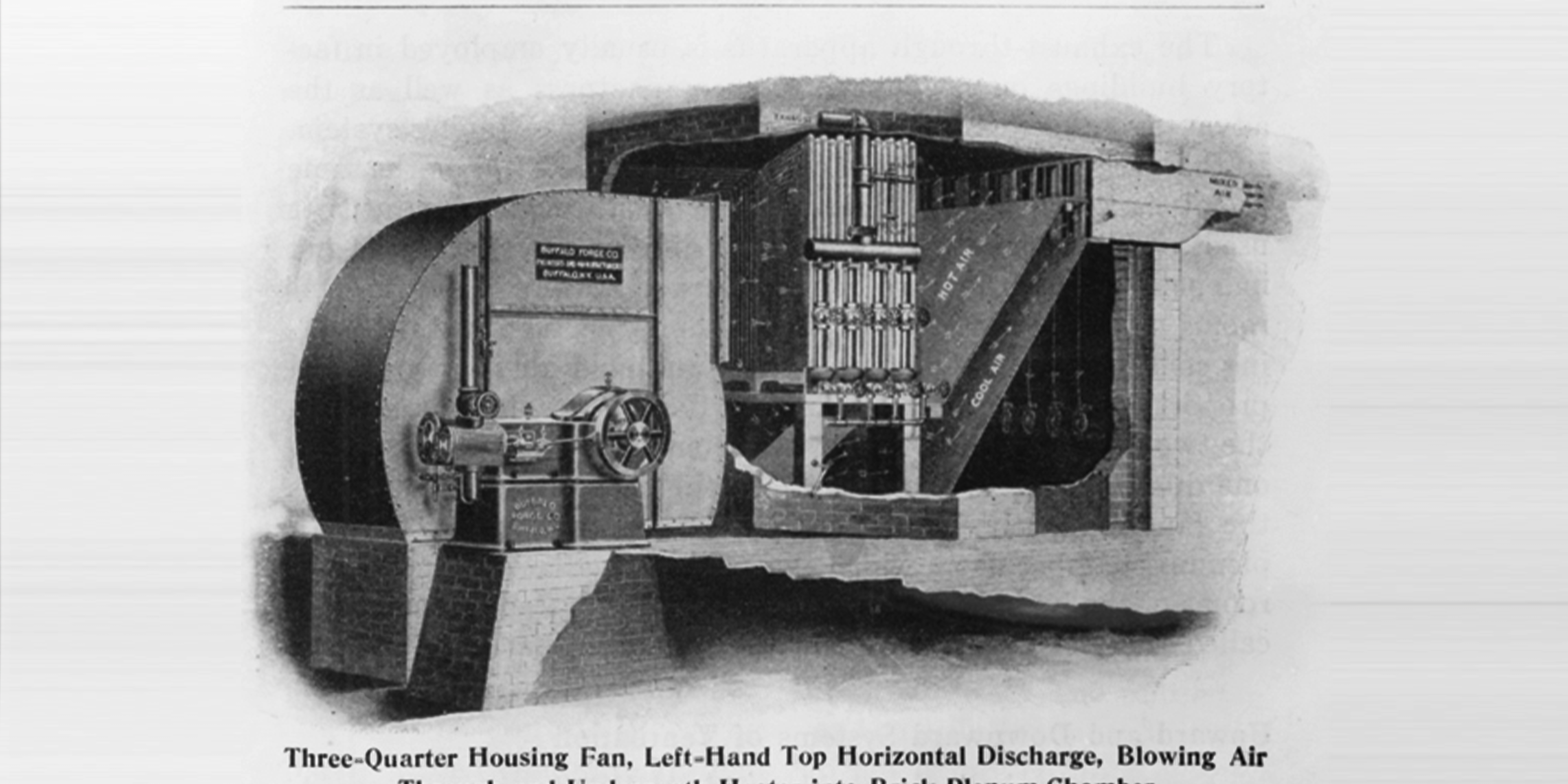
Schematic Drawing of AC System
This 1902 schematic drawing shows the likely air-conditioning system installed at Sackett & Wilhelms, a Brooklyn, New York, lithographer desperate to find a solution to the humidity problems plaguing its printing processes.
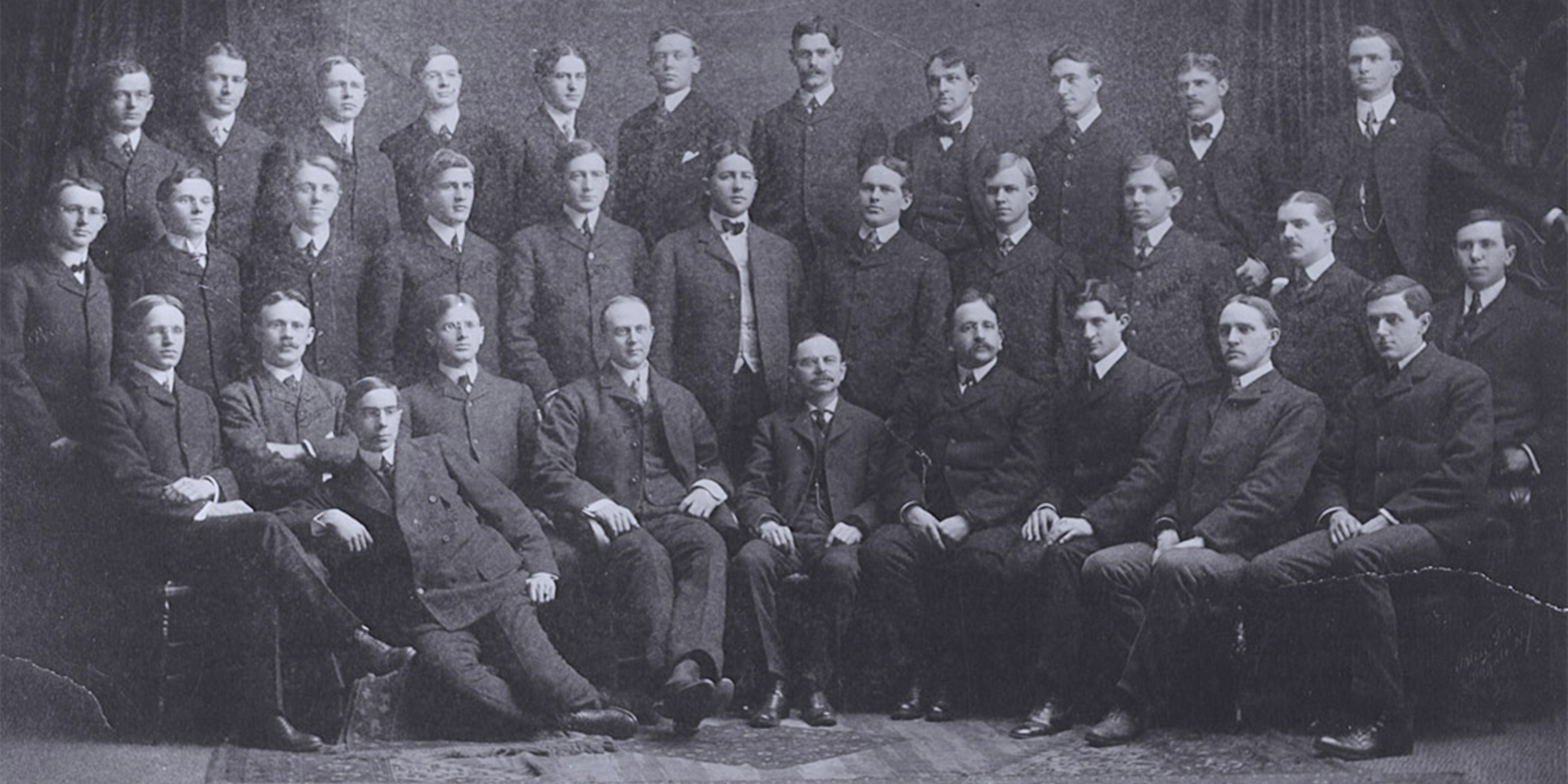
Buffalo Forge Company Engineer Group Portrait
A 1903 group portrait of the engineers of Buffalo Forge Company includes Willis Carrier (bottom row, third from right) and his future business partner, J. Irvine Lyle (middle row, sixth from left). Carrier, Lyle and five fellow engineers would launch Carrier Engineering Corporation as an independent entity in 1915.

The Blueprint of an Industry
This drawing, the result of Willis Carrier’s groundbreaking design, was submitted to Sackett & Wilhelms on July 17, 1902 and provided the basis for the invention that would change the world, the first modern air conditioning system.
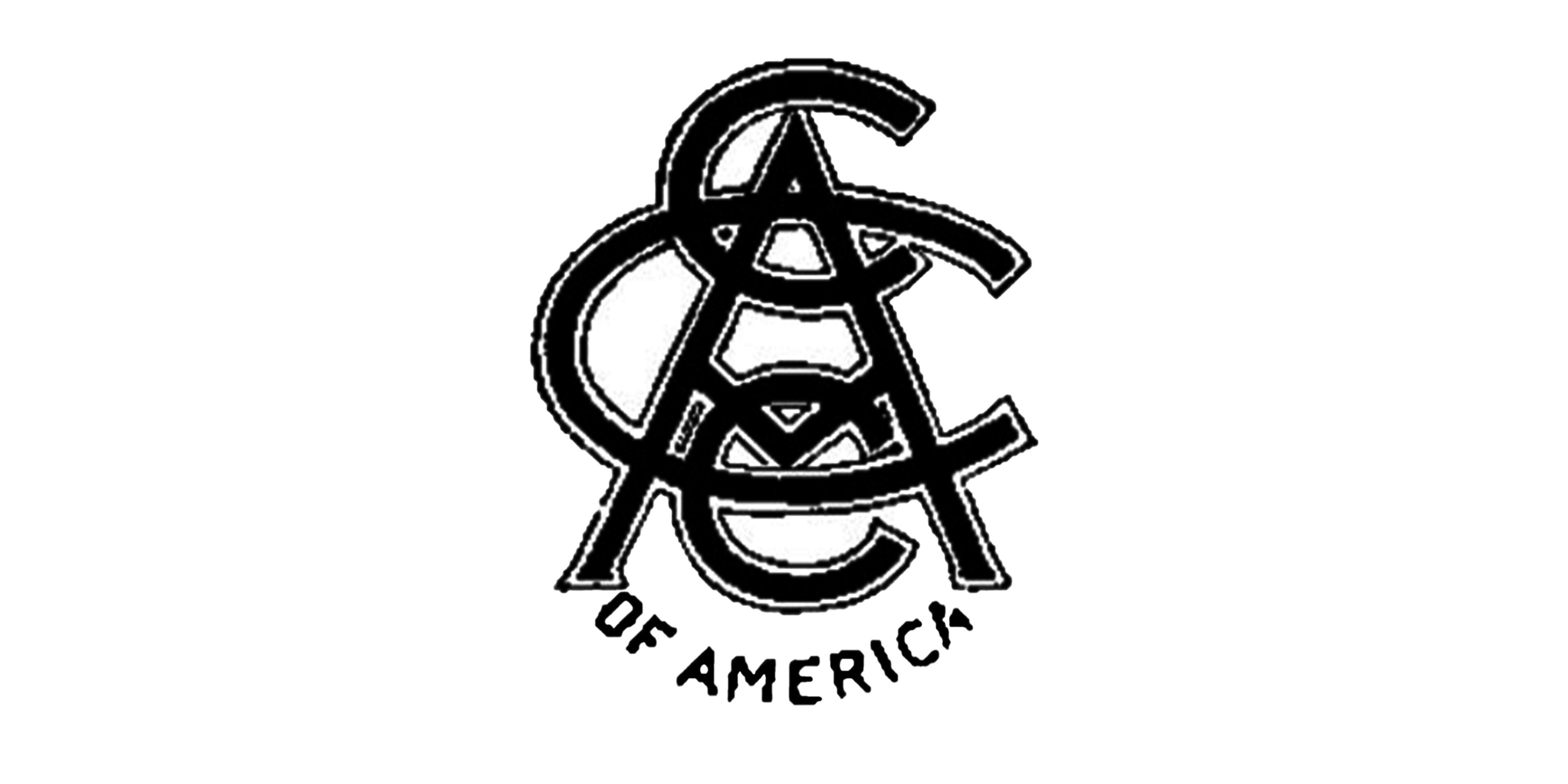
The Launch of Carrier Air Conditioning Company
In the opening decades of the 20th century, Willis Carrier established Carrier Air Conditioning of America as the worldwide leader, advancing the science and application of air conditioning across multiple industries around the globe.
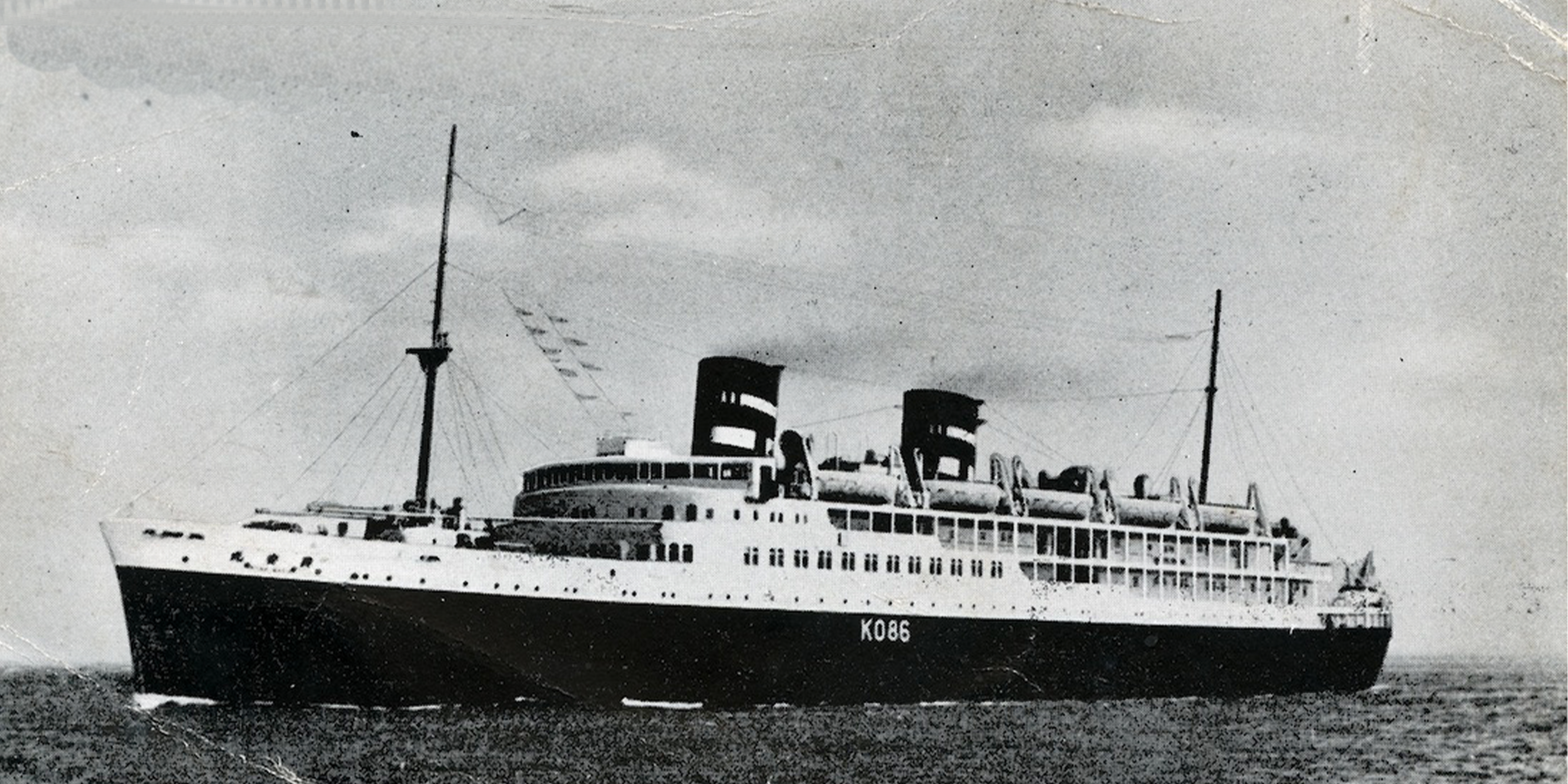
The Koan Maru
The world's first fully air-conditioned ship, Japan's Koan Maru, was completed in 1937 with Carrier systems.
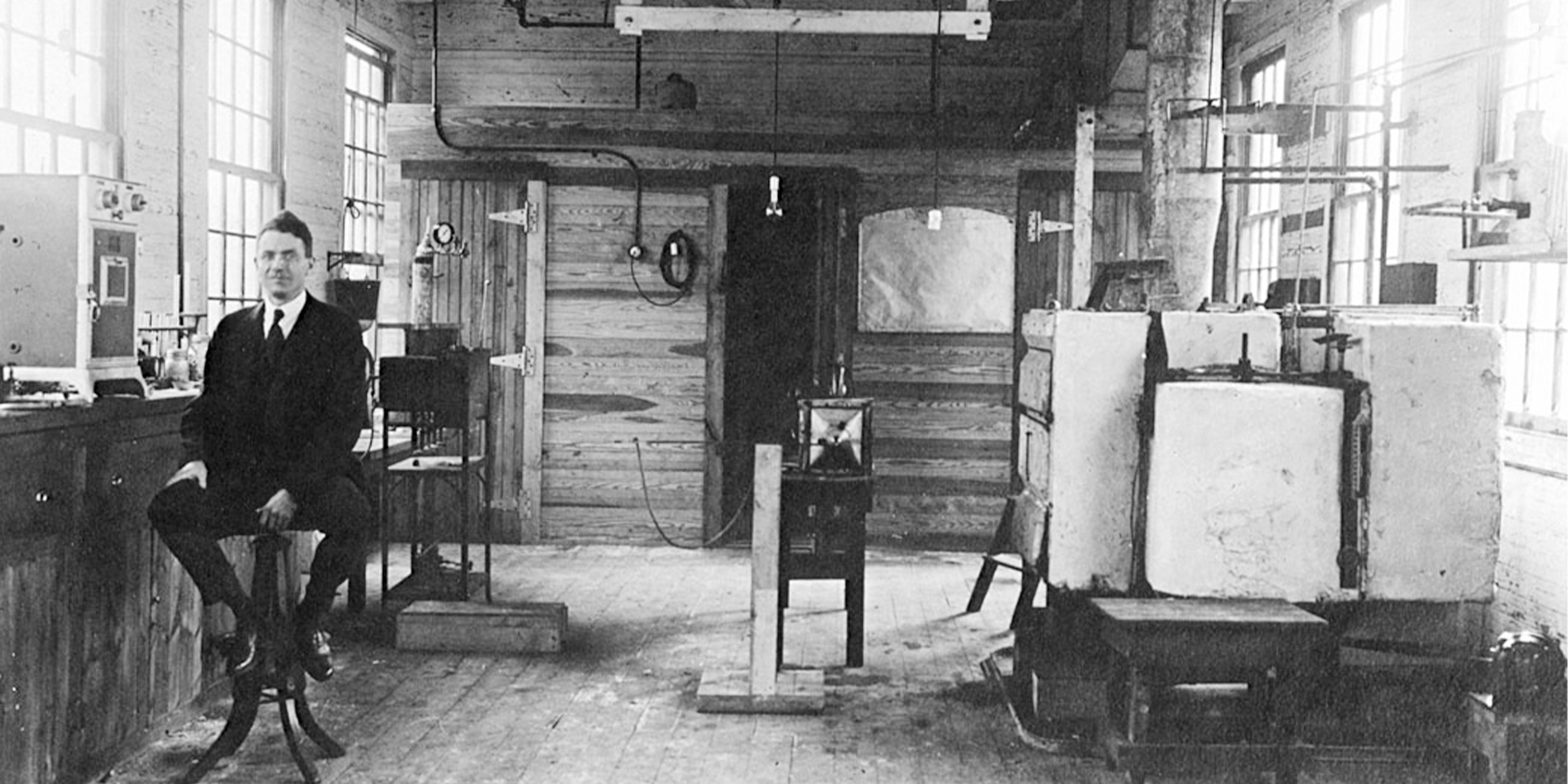
Carrier co-founder Alfred E. "Ned" Stacey
This iconic photo of Carrier co-founder Alfred E. "Ned" Stacey shows him seated in the company's Newark, New Jersey, research laboratory shortly after its founding in 1918.
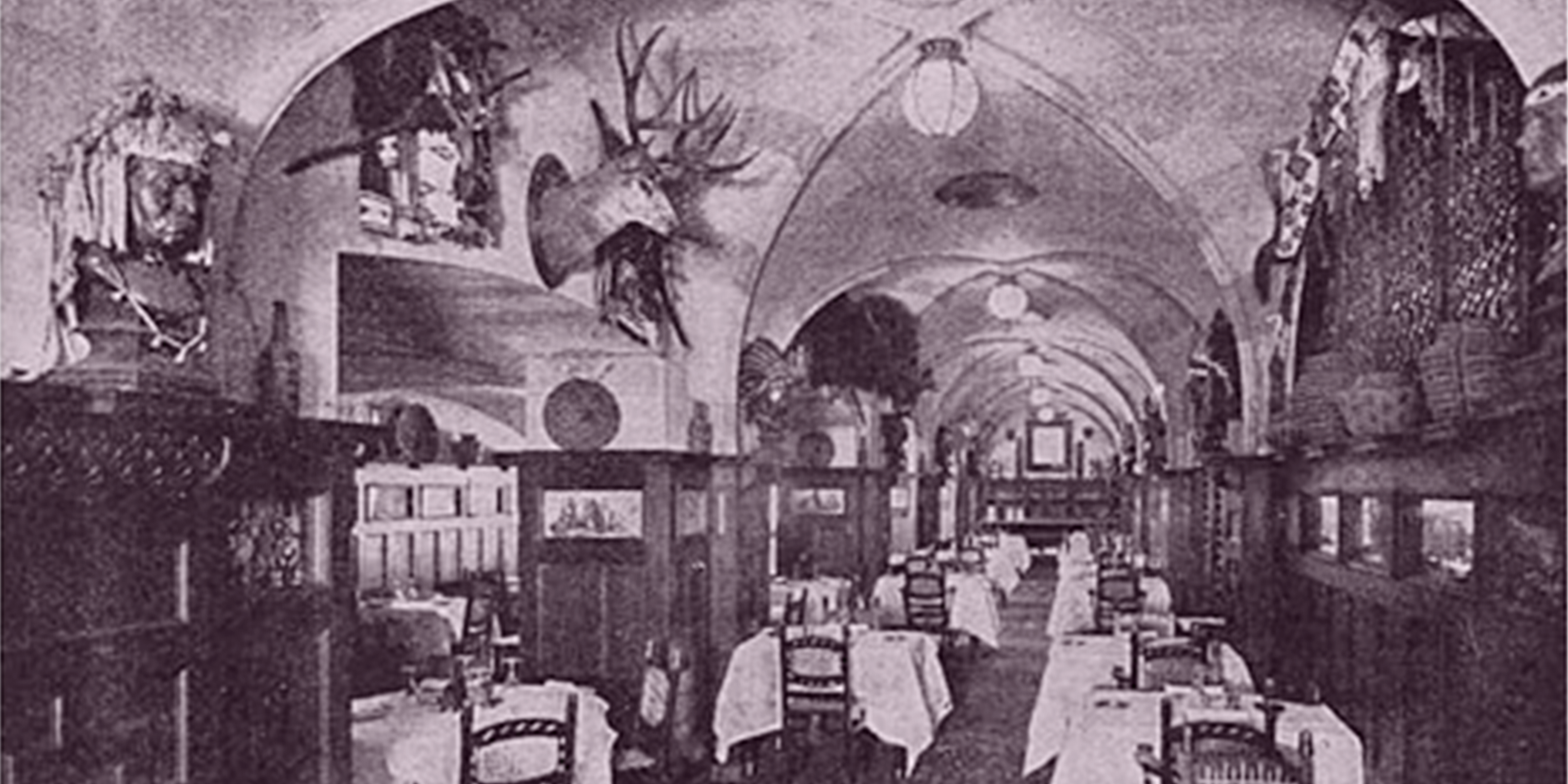
Elevating the Hospitality Industry
The company pushed into new frontiers, selling a humidifying system to the Astor Hotel in New York City, and in 1914 to the Baltimore and Muehlebach hotels in Kansas City, Missouri. These latter installations included mechanical refrigeration and were targeted at the very earliest kind of comfort cooling—not just improving production efficiencies, but trying to make people feel better.

Willis Carrier Circa 1920
The invention of modern air conditioning in July 1902 was just the beginning for Willis Carrier, whose contributions to efficient industrial production and enhanced human comfort over the next 50 years were so comprehensive that he became known as “the Father of Air Conditioning.”
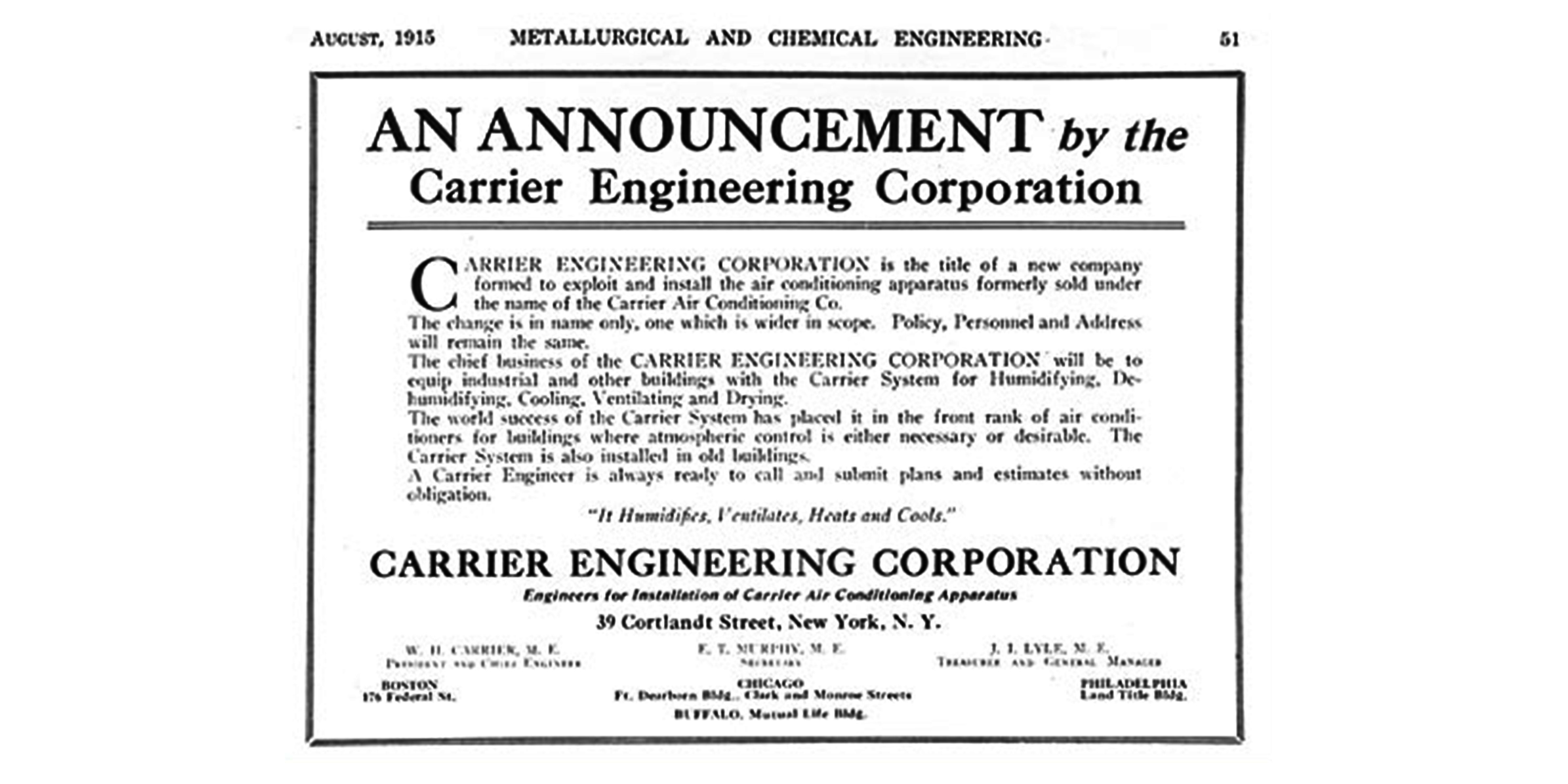
Manufactured Weather
Carrier Engineering Corporation had talented engineers and bright prospects, but little capital. Promoting the business and booking sales were essential activities in the company's first few months of existence.
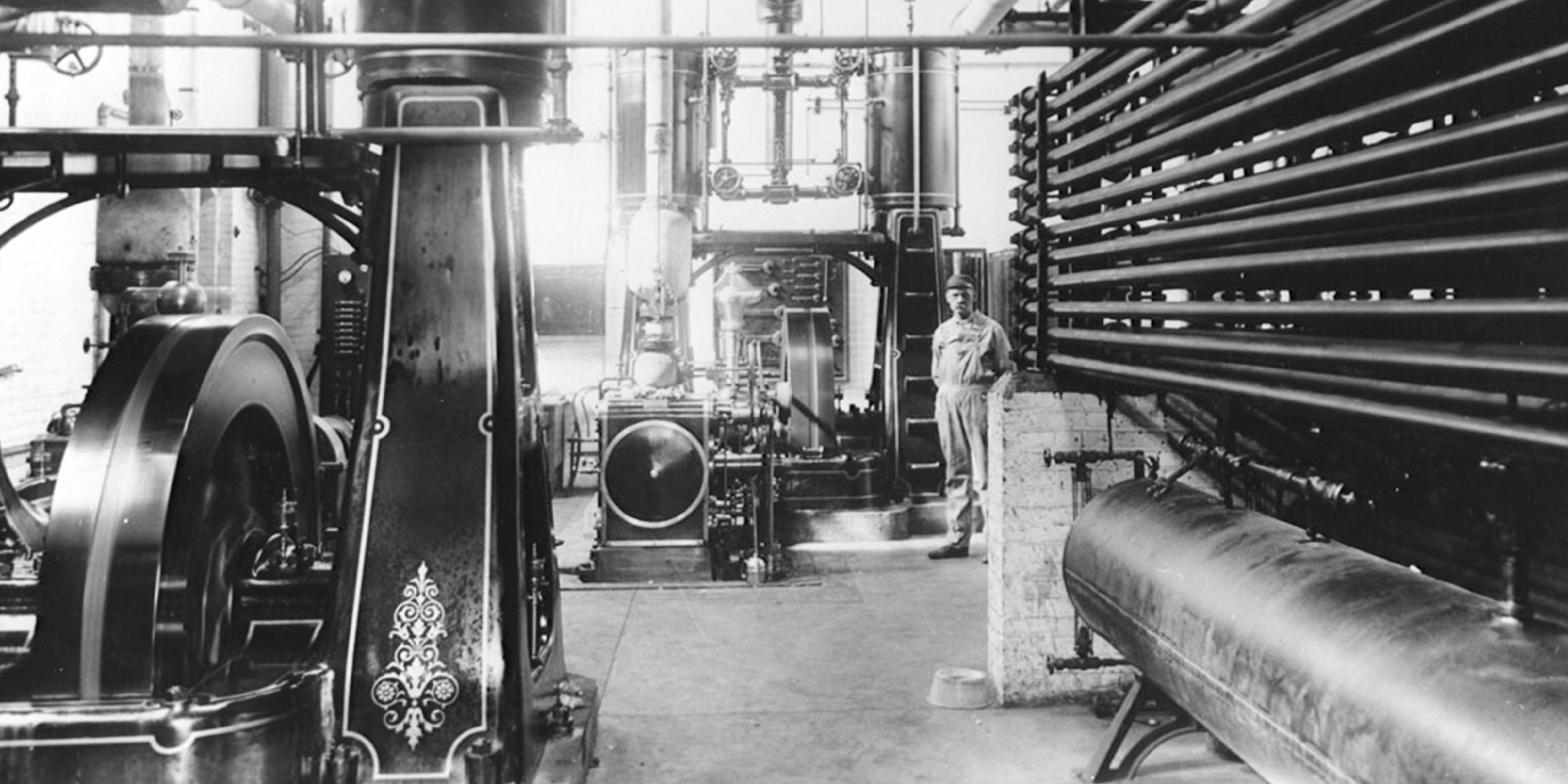
The International Arms and Fuse Company
Carrier's installation of modern air conditioning at the International Arms and Fuse Company in New Jersey was representative of the sophisticated work the company performed during World War I, drastically improving efficiency and saving lives.

Confectioner
Confectioners were among the first to adopt modern air conditioning, revolutionizing the manufacture of candy and sweets.
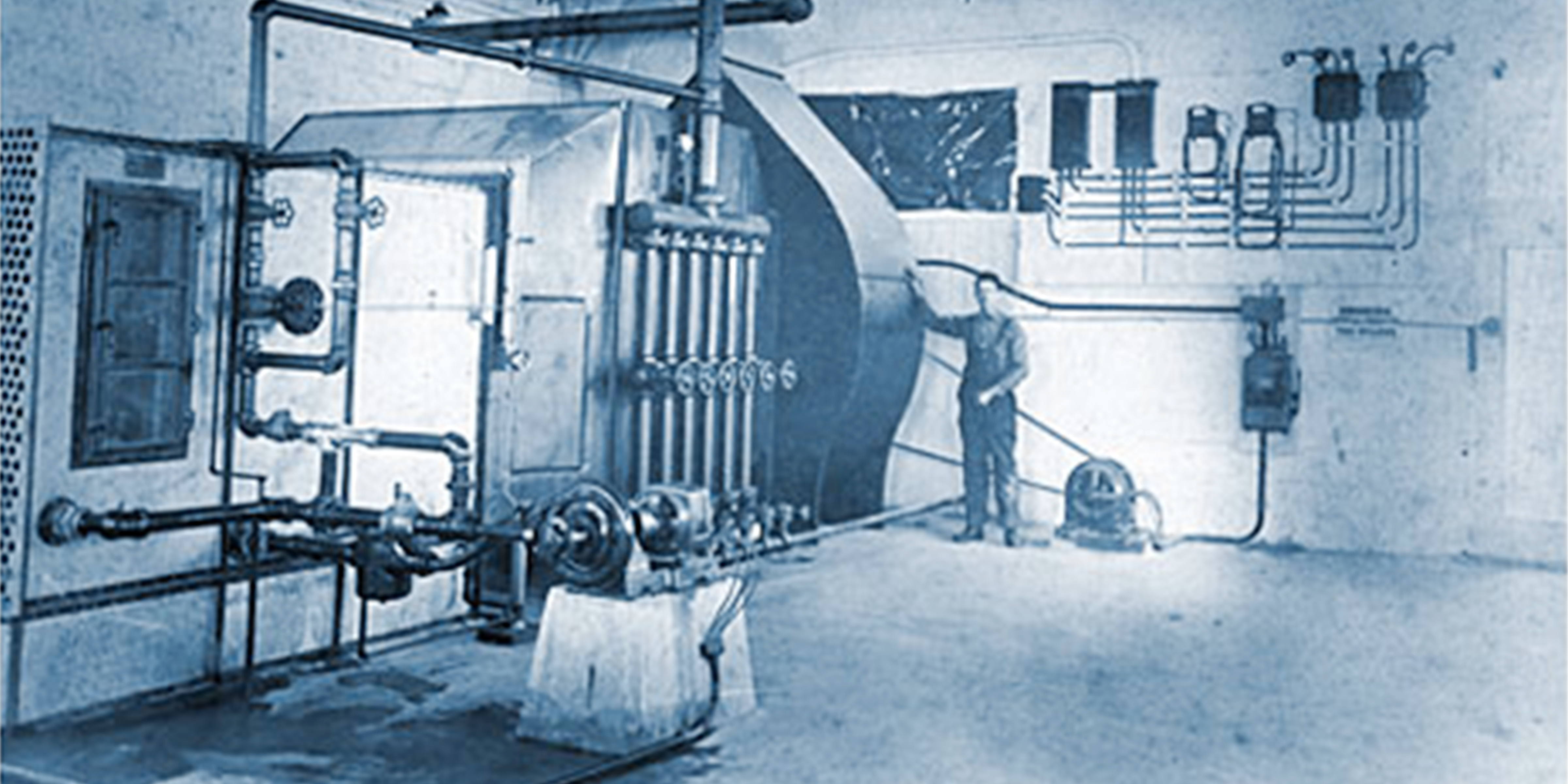
Alfred E. "Ned" Stacey, Jr.
Robust sales of the Carrier Air Washer and Humidifier helped launch Carrier Air Conditioning Company of America in 1907. Here, Alfred E. "Ned" Stacey, Jr., assistant to Willis Carrier in the early development of modern air conditioning, services one of the company's first installations.
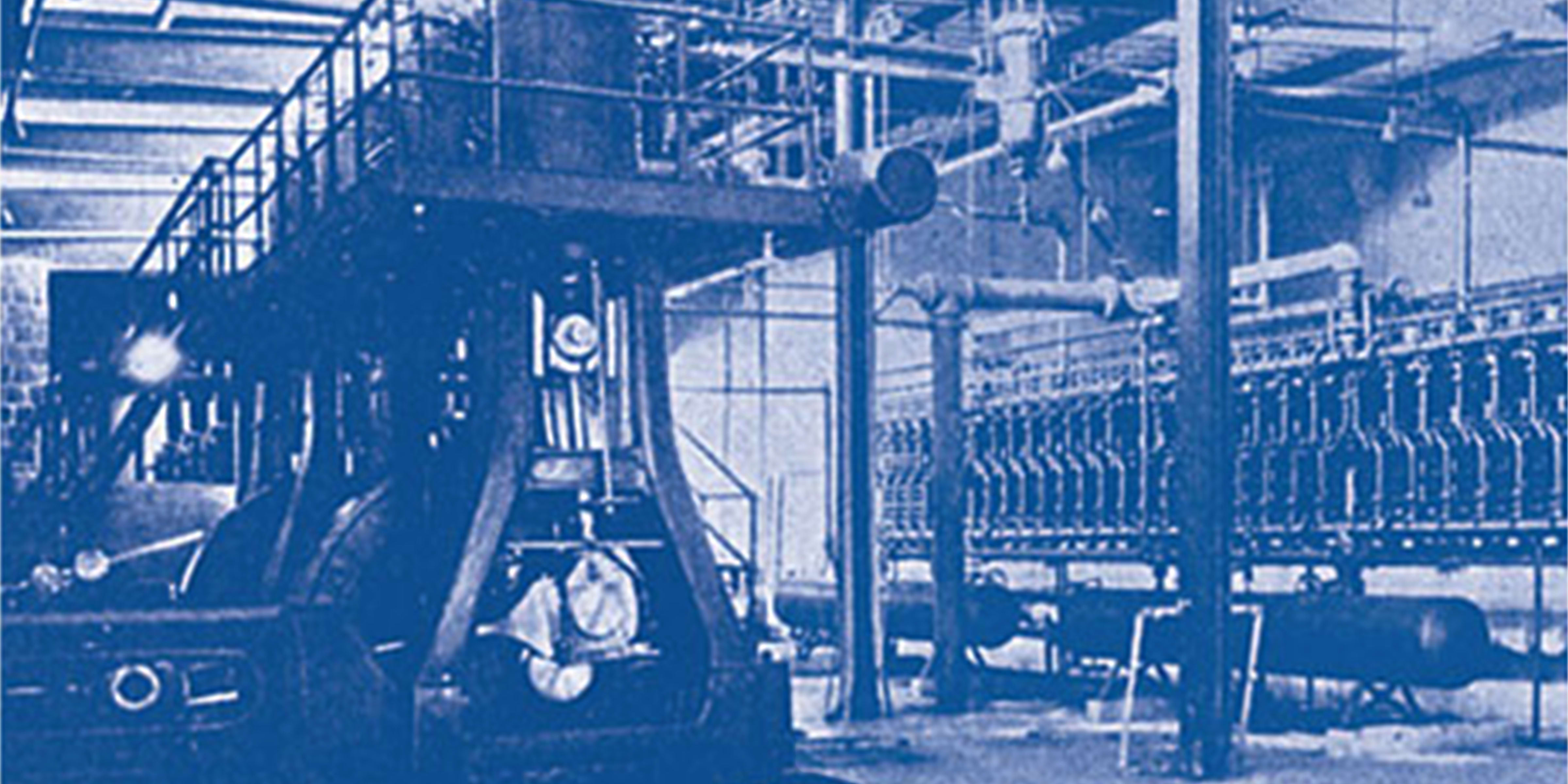
The Atlas Powder Company
Installation of Carrier equipment at the Atlas Powder Company in 1918 demanded a level of precision and performance that the company would put to great advantage in peacetime application.
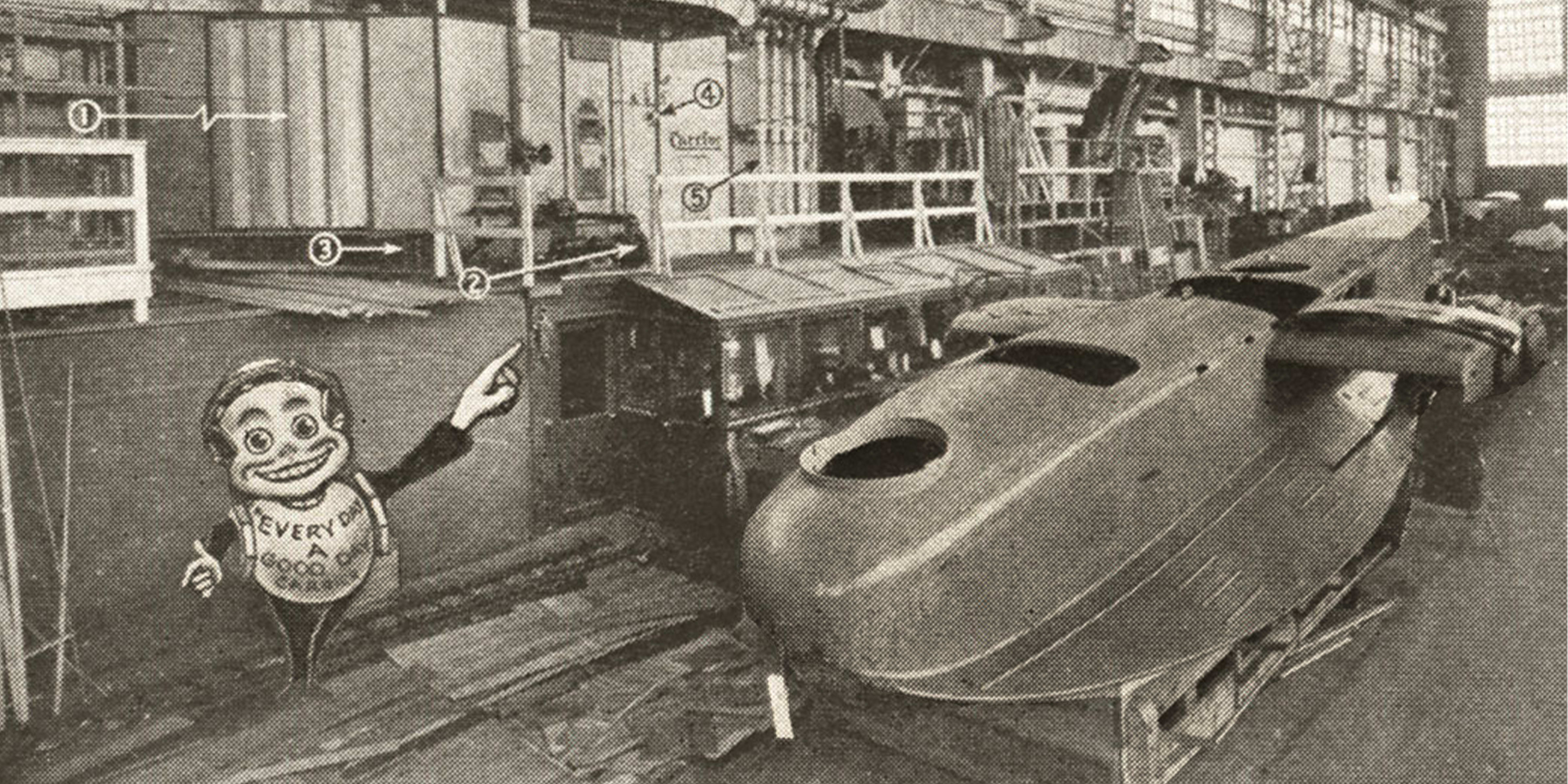
The Mechanical Weather Man
When the Mechanical Weather Man appeared in an aviation manufacturing plant, it reminded readers that "every day a good day" meant uniform production of essential goods could occur year-round.
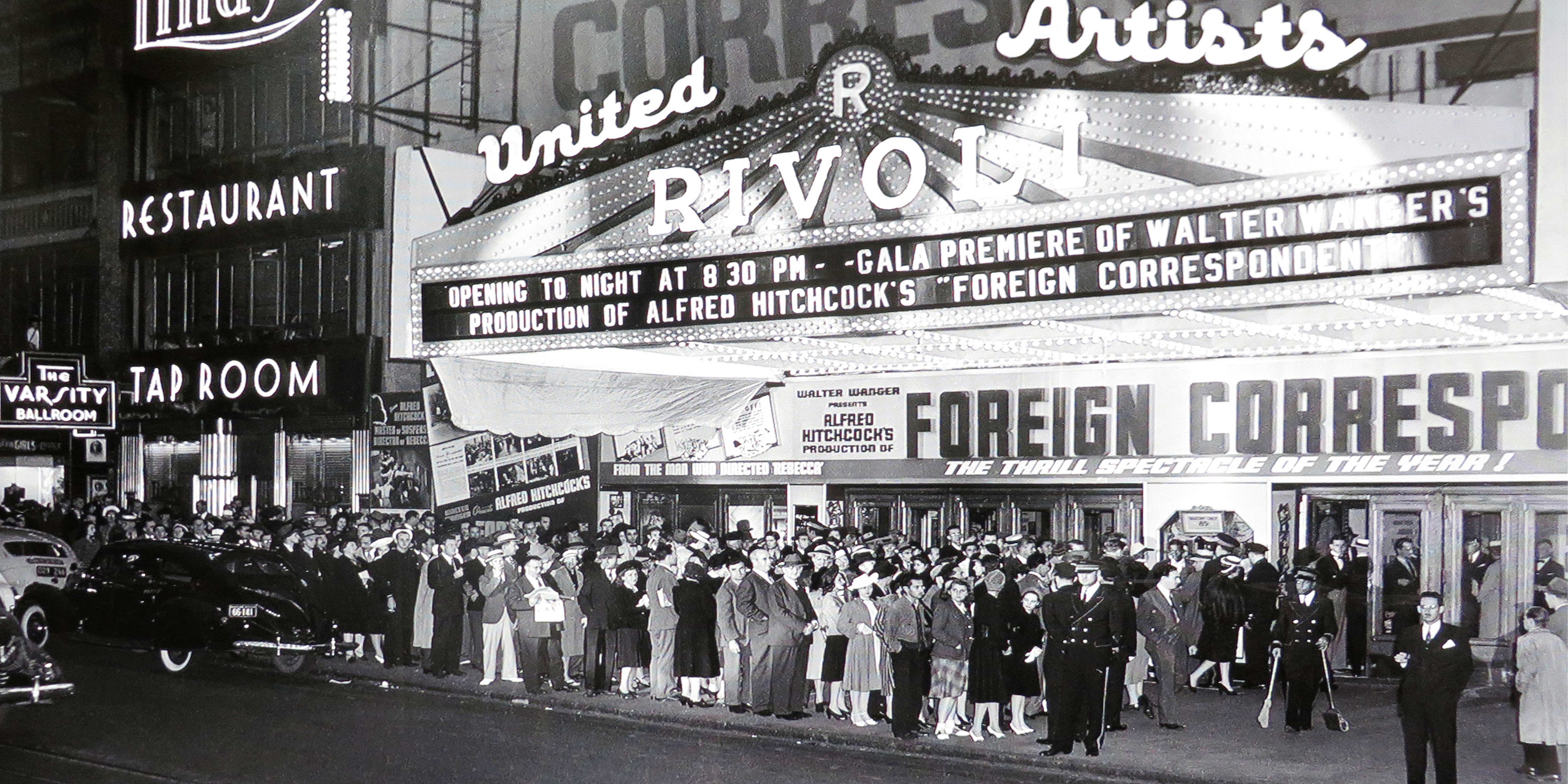
Rivoli Theatre
The experience gained in providing modern air conditioning for some 200 industries would allow Carrier to make a smooth transition into public air conditioning. The work done in movie theaters, including the celebrated installation at the Rivoli Theatre in New York, was especially important in introducing comfort air conditioning to the general public, greatly improving the fortunes of Hollywood and the theater industry.
The Rivoli Theatre on Broadway found itself to be a haven from the heat of summer, generating more year-round patrons and profits thanks to Carrier air conditioning.
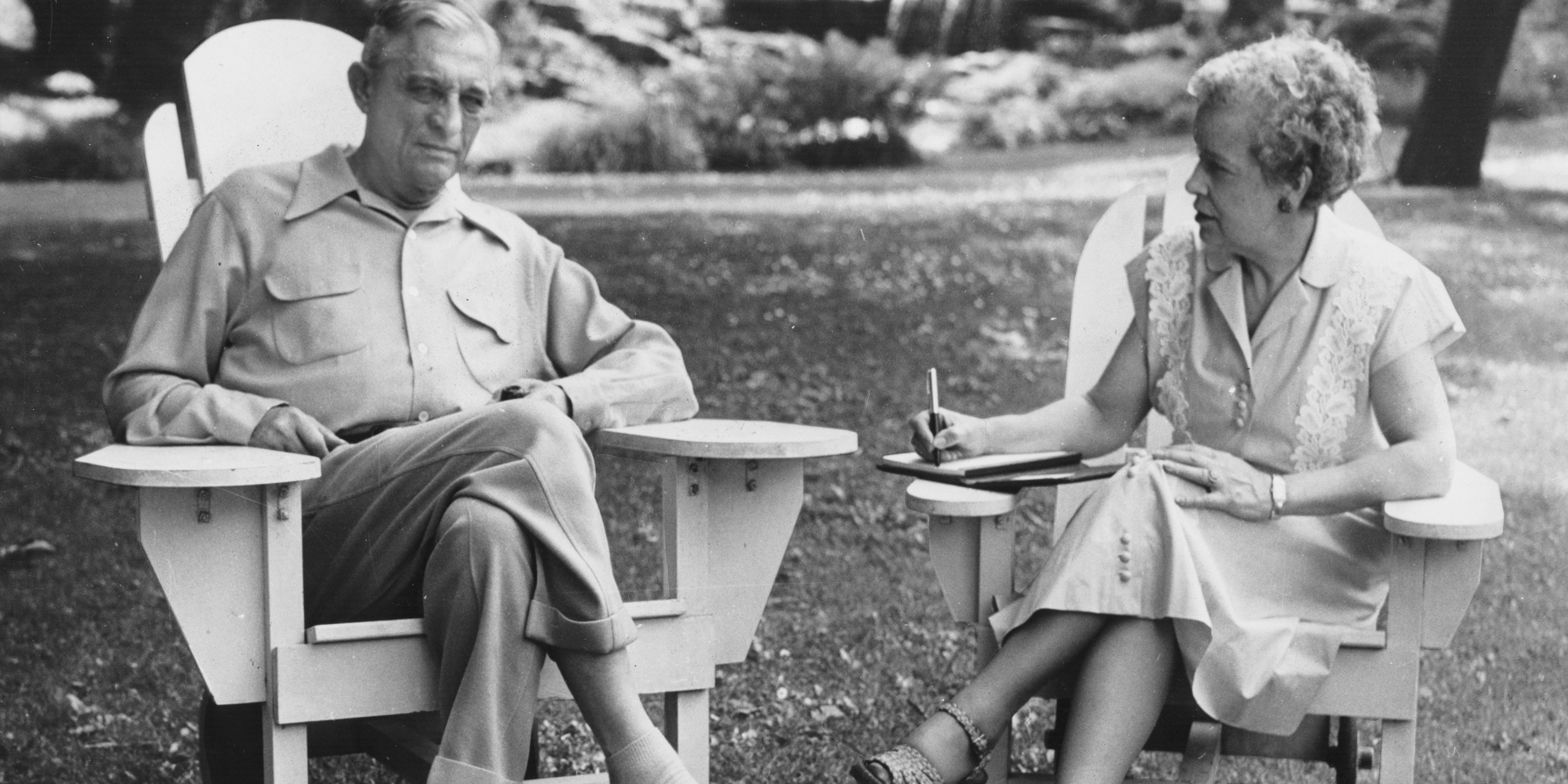
Biographer Margaret Ingels
Margaret Ingels began work with Willis Carrier in 1948, recording 96 separate interviews that resulted in his biography, Willis Carrier: Father of Air Conditioning.
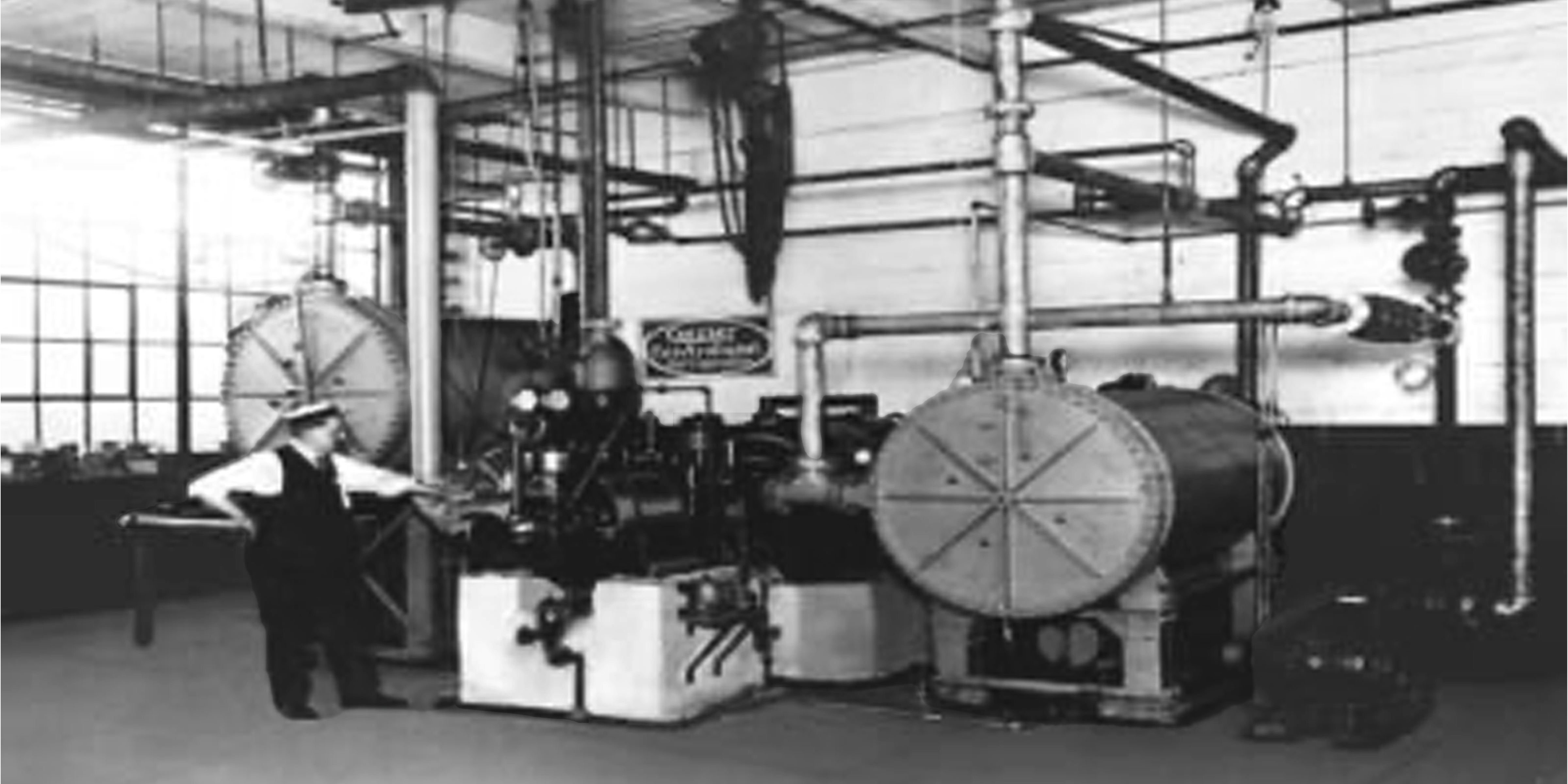
The 1st Centrifugal Chiller
Shown in the Carrier plant in 1922, the first centrifugal chiller opened the door to large-scale comfort air-conditioning.
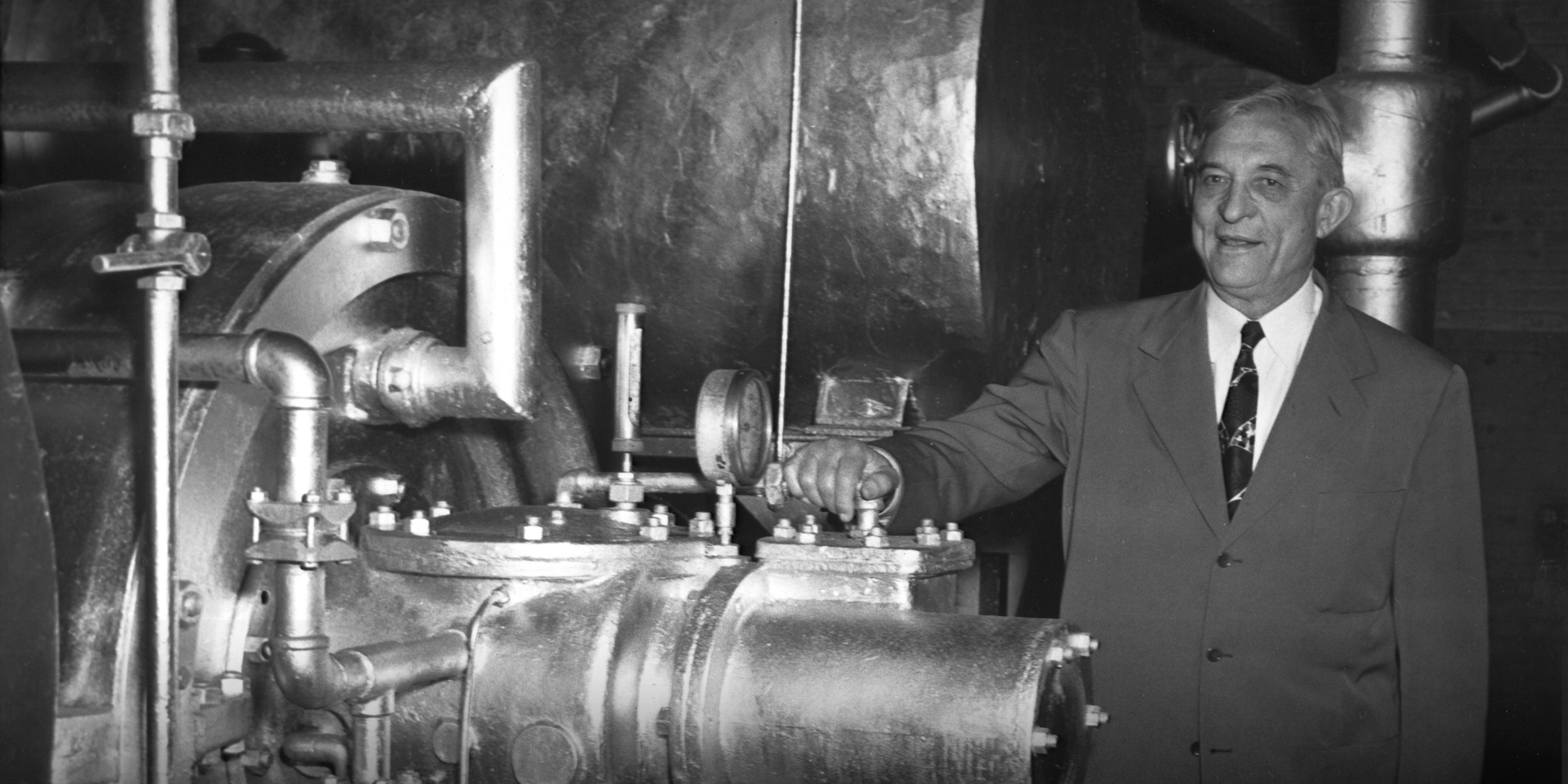
Willis Carrier Visits Onondaga Pottery
On the same day in 1950 that Carrier Corporation completed its 2,000th centrifugal refrigeration machine, Dr. Willis H. Carrier, Chairman Emeritus, visited the Onondaga Pottery Company in Syracuse, N.Y. to inspect his first centrifugal, completed in 1922. The Chief found it in perfect working condition. This picture is thought to be among the last taken of Dr. Carrier.
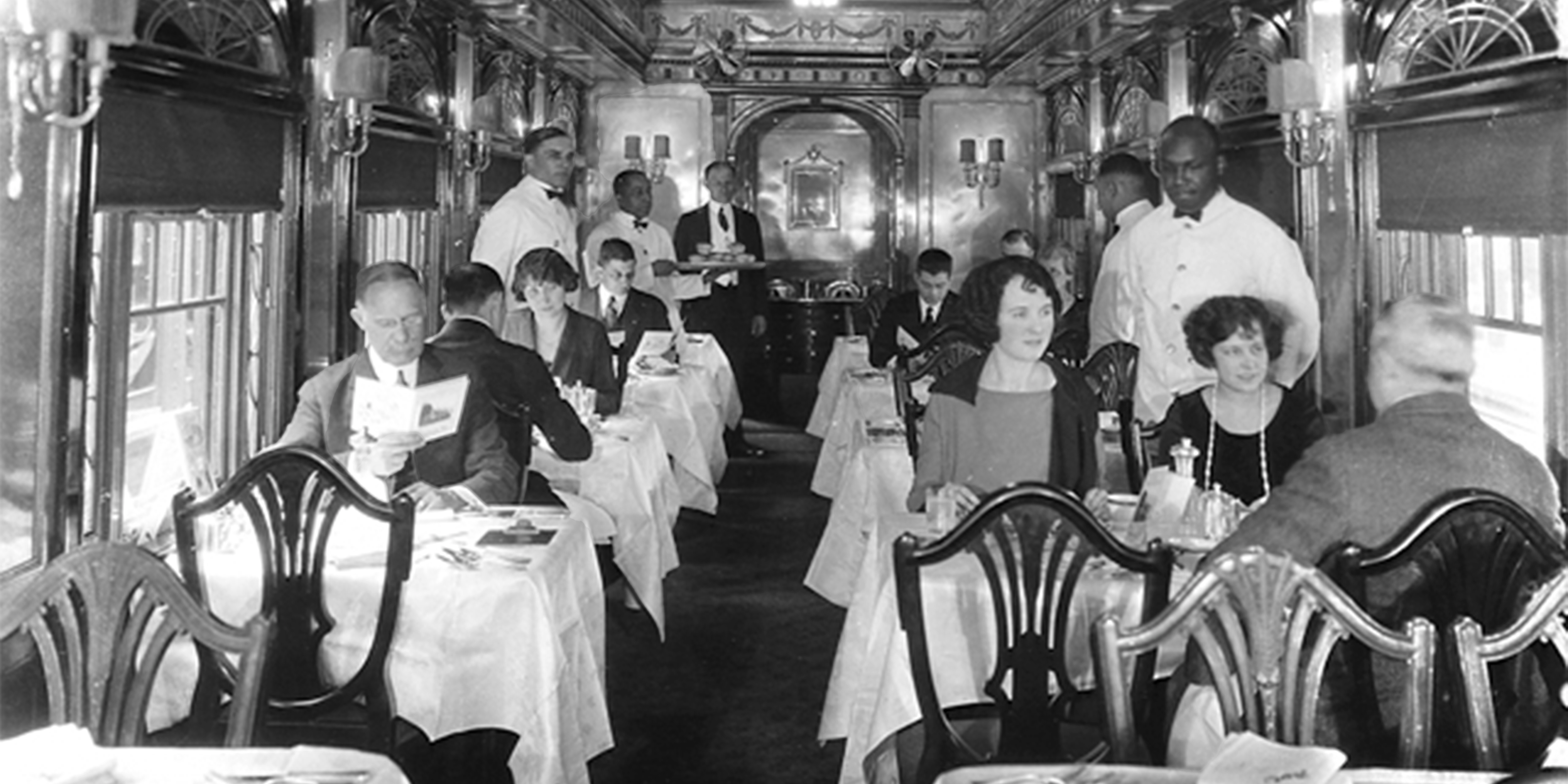
The Martha Washington Railcar
Passengers dine in style and comfort on the Martha Washington, the Baltimore and Ohio’s dining car made famous as the first railcar cooled by Carrier air-conditioning. Circa 1930.
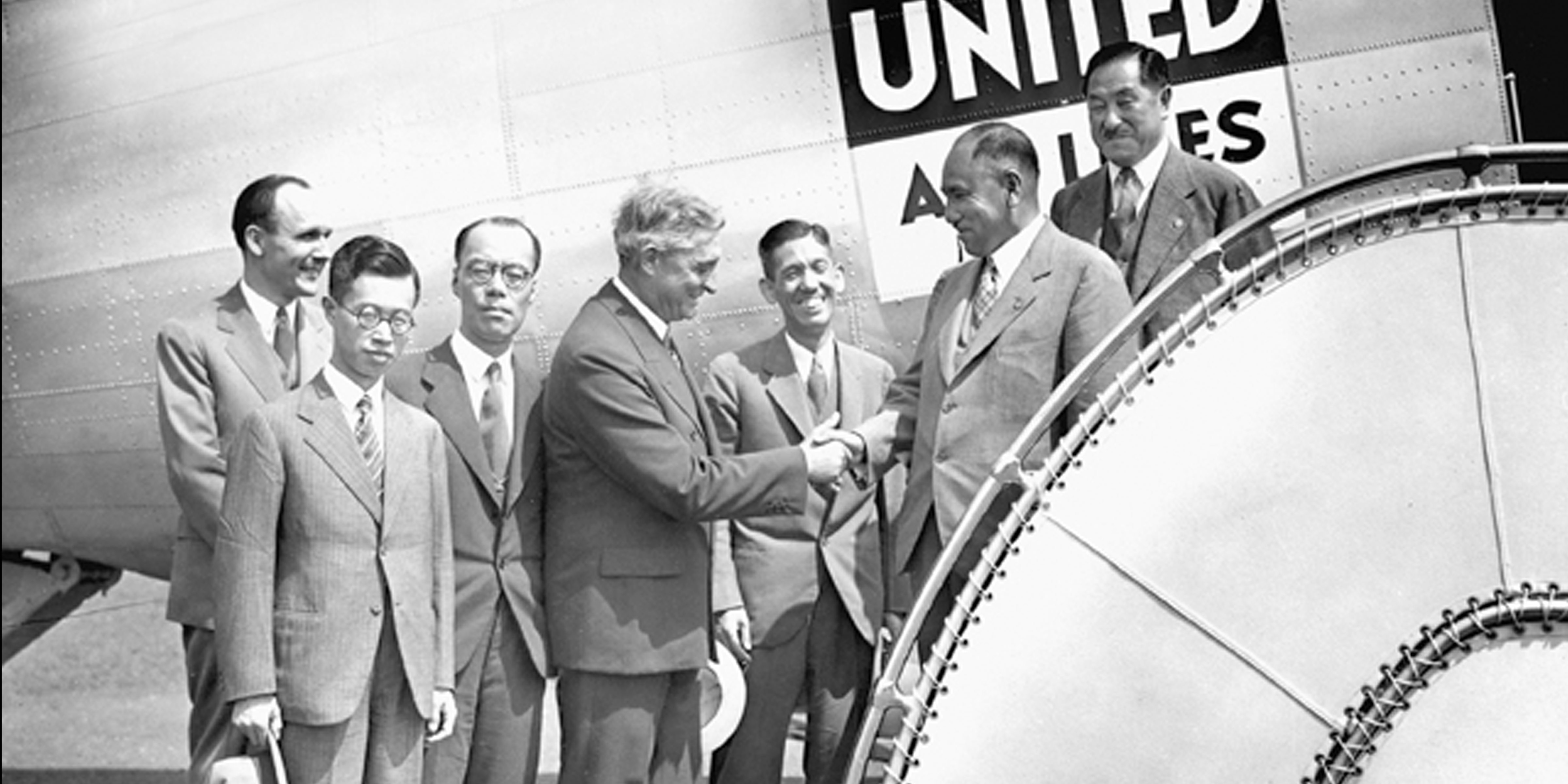
Japanese Trade Commission
From the first sale in 1907 of Willis Carrier’s air-conditioning equipment to an international customer, the Fuji silk spinning Company of Yokohama, Dr. Carrier and his company maintained close ties with Japan. shown here in 1937, Carrier invited members of the Japanese trade Commission to Newark Airport for a flight over the Metropolitan area in a United Air lines Mainliner. United Airlines was once owned by United Aircraft Corporation, which became United Technologies Corporation in 1975.
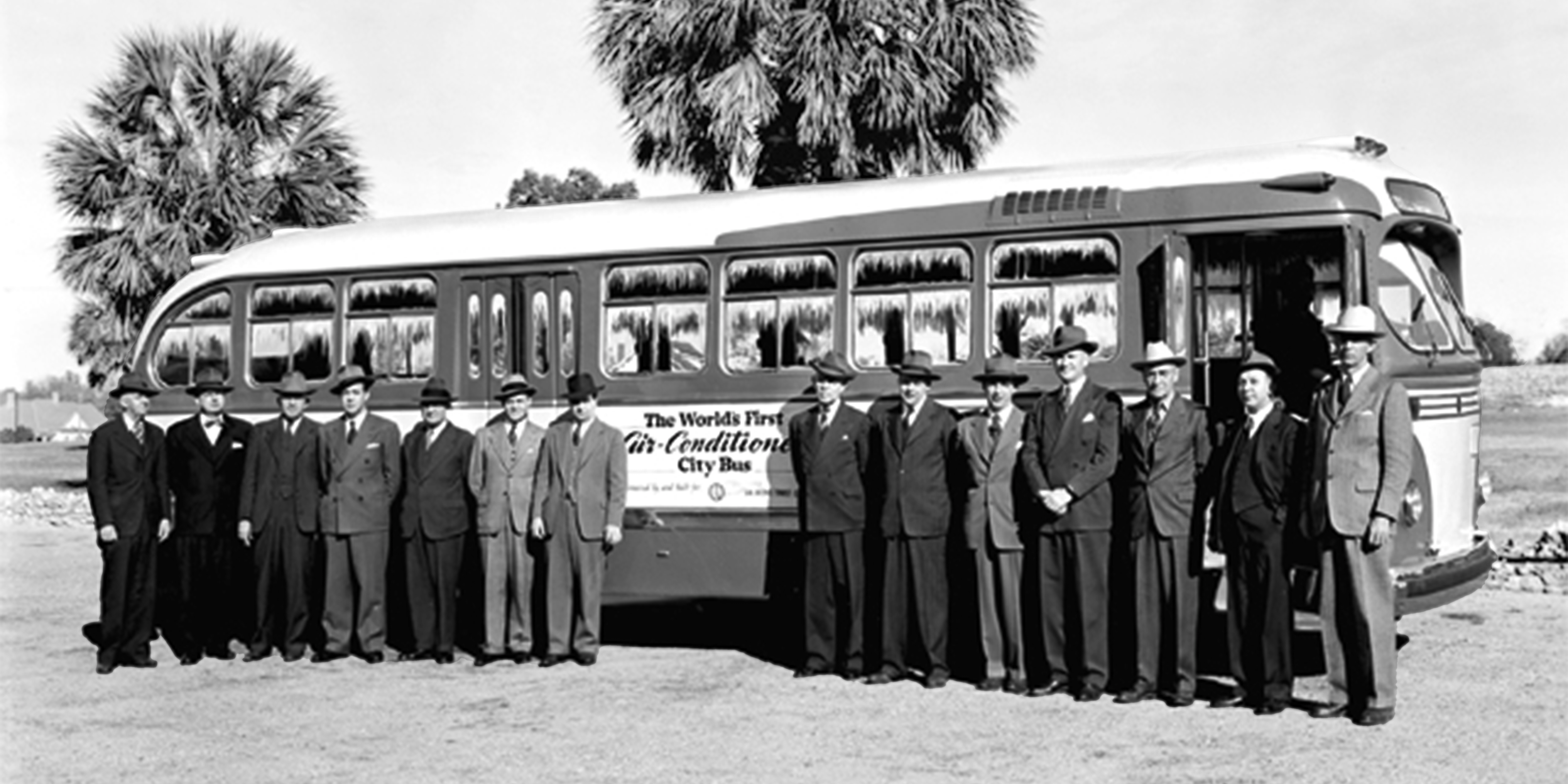
The World's 1st AC City Bus
San Antonio touts “The World’s First Air-Conditioned City Bus” in 1946, based on the pioneering work done by Carrier engineers for the Nairn Transport Co. of Beirut in 1937.

Willis Carrier Circa 1915
On October 7, 1950, shortly before his 74th birthday, Willis Carrier died while on a trip to New York City. It was the end of a rich and remarkable life, the close of an era for both an industry and a company, but just the start of an enduring legacy.
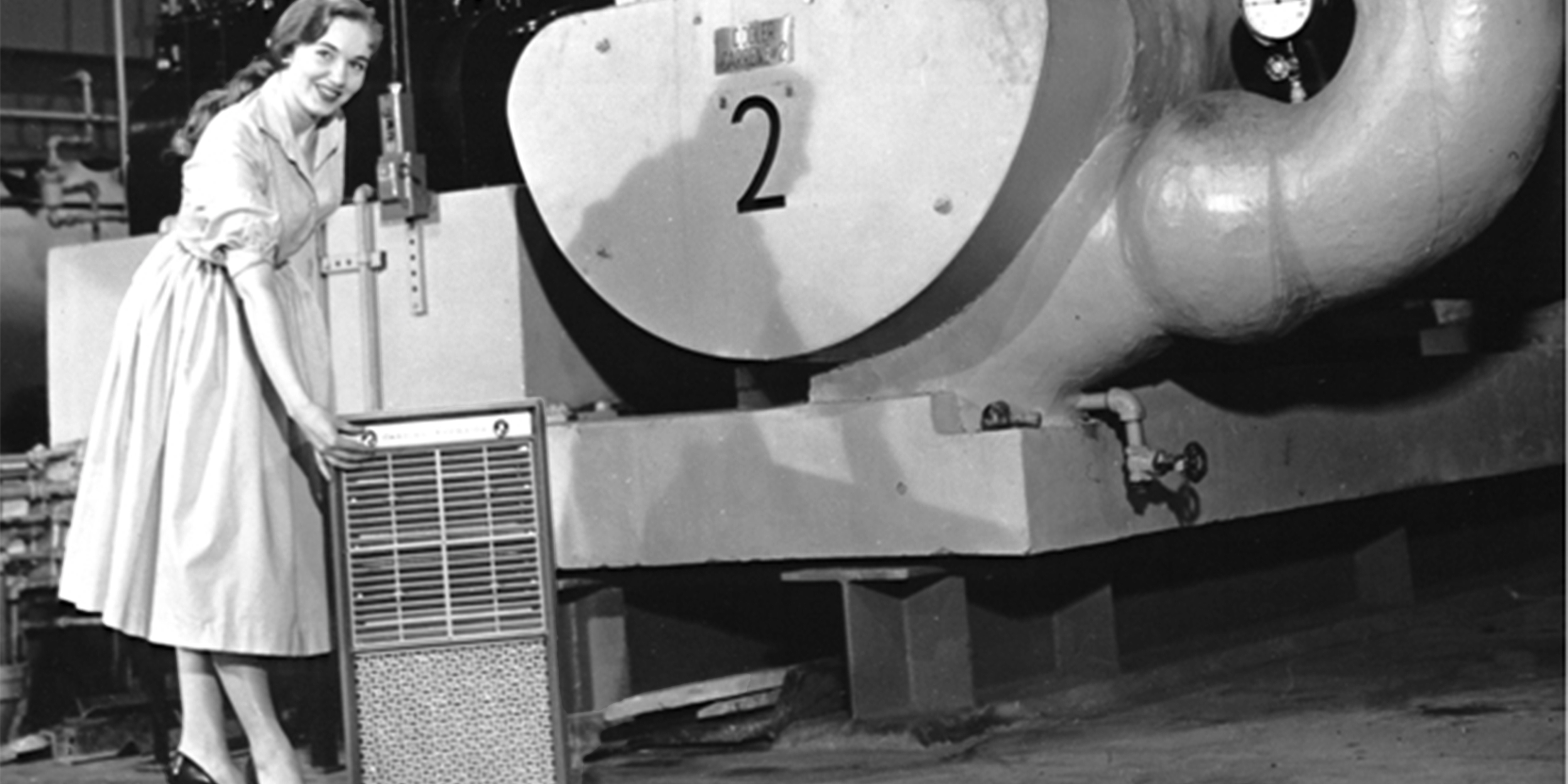
Mobile Homes Show
Few pictures demonstrate the breadth of Carrier’s capabilities better than this 1957 shot from the Mobile Homes Show in the New York Coliseum (at the site of today’s Time Warner Center). A hostess turns the control dial on a tiny one-horsepower Roomette air-conditioner for mobile homes, while behind her a Carrier centrifugal chiller provides cooling for the nine acres of exhibit space at the show.
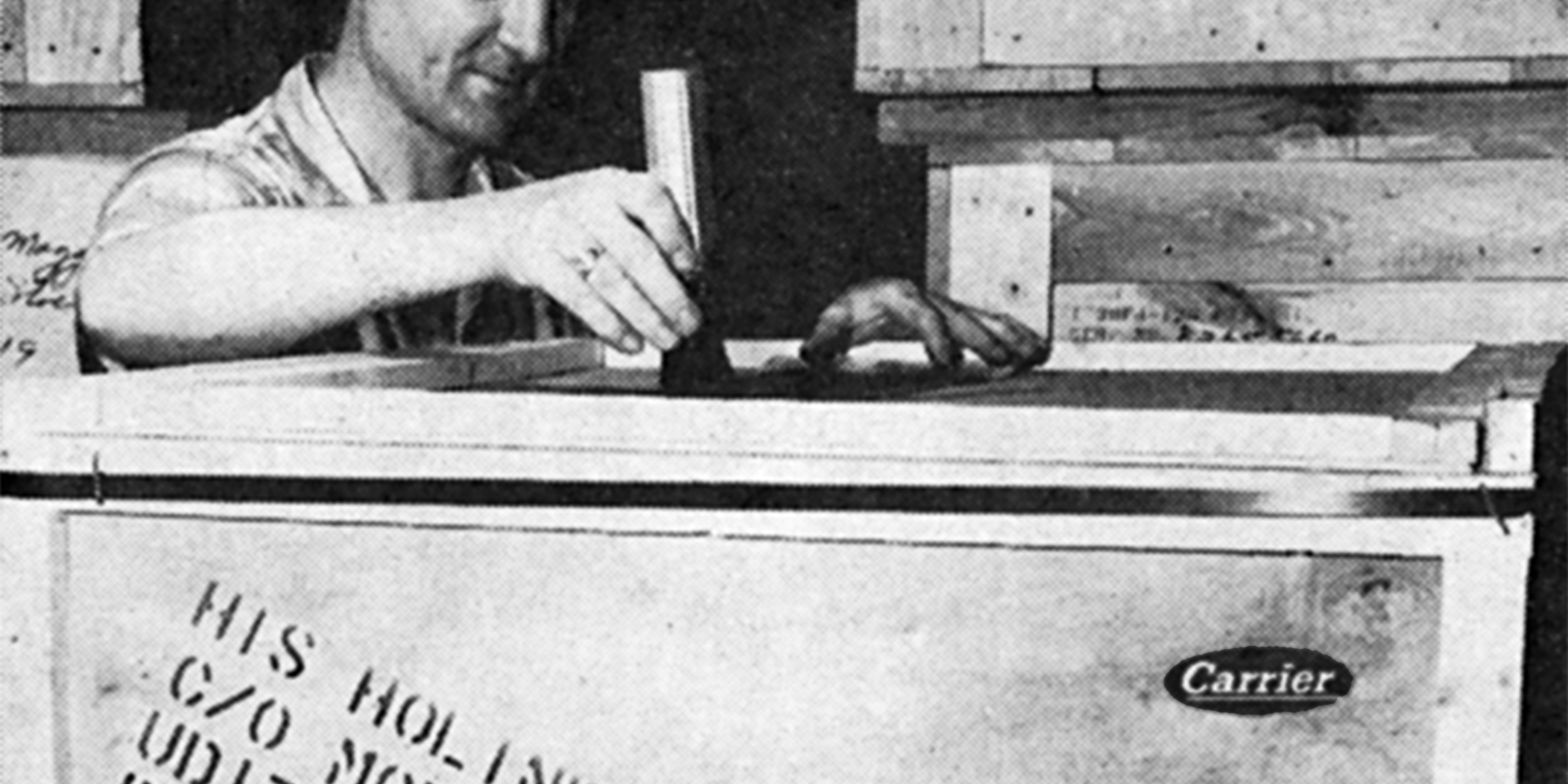
Cooling the Vatican
Air-conditioning arrived at the Vatican in the summer of 1959 when Carrier centrifugal machines began delivering 10 tons of cooling capacity to combat Rome’s intense summer heat. This gift from a visiting Chicago businessman made Pope John XXIII the first “comfort cooled” Bishop of Rome in the long history of the Catholic Church.
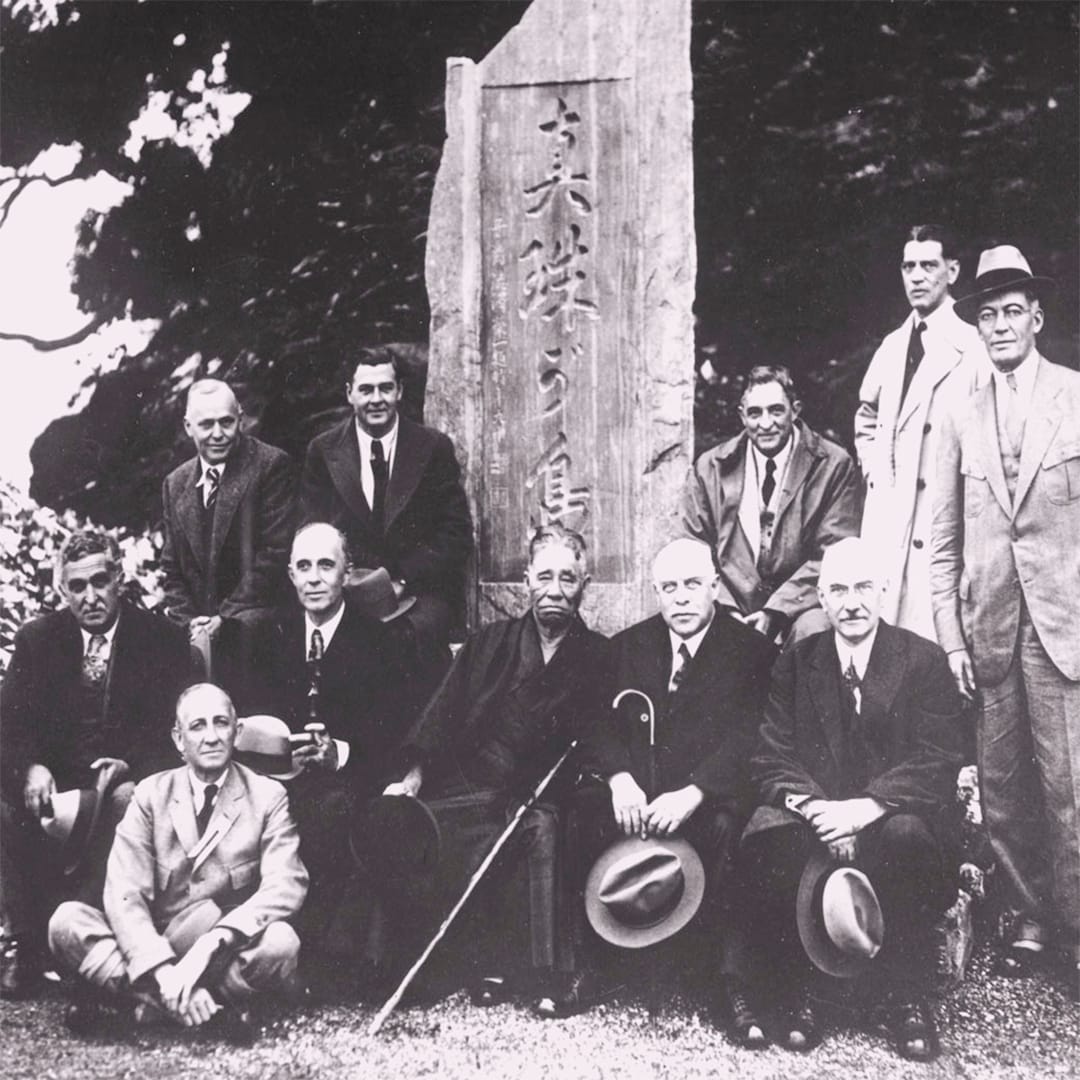
The Fuji Silk Spinning Company of Yokohama, Japan
Few of Willis Carrier's activities in the opening decade of the 20th century would have a more lasting impact than the first international sale of modern air conditioning in 1907 to the Fuji Silk Spinning Company of Yokohama, Japan. Dr. Carrier spent a lifetime advancing air conditioning around the world. He is shown here (top row, third from right) taking a break from the World Engineering Congress in Tokyo in 1929, accompanied by Japanese entrepreneur Mikimoto Kōkichi (center) at Mikimoto Pearl Island.
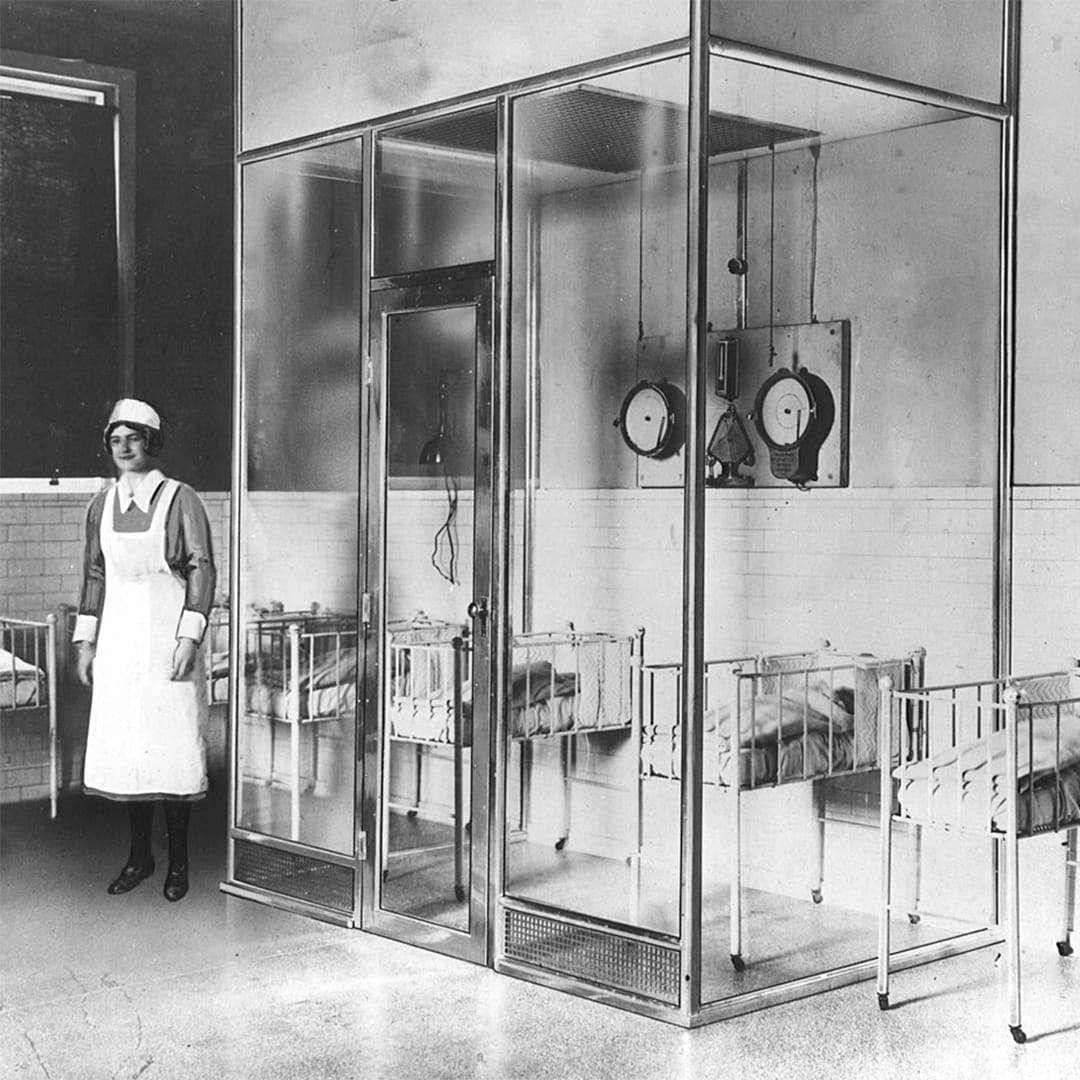
Allegheny General Hospital
The sale of modern air conditioning in March 1914 to the Allegheny General Hospital in Pittsburgh, Pennsylvania, was used to establish the first incubator room, capable of providing a healthy, comfortable environment for infants. Air conditioning for patient care would be adopted by hospitals around the world throughout the 20th century.
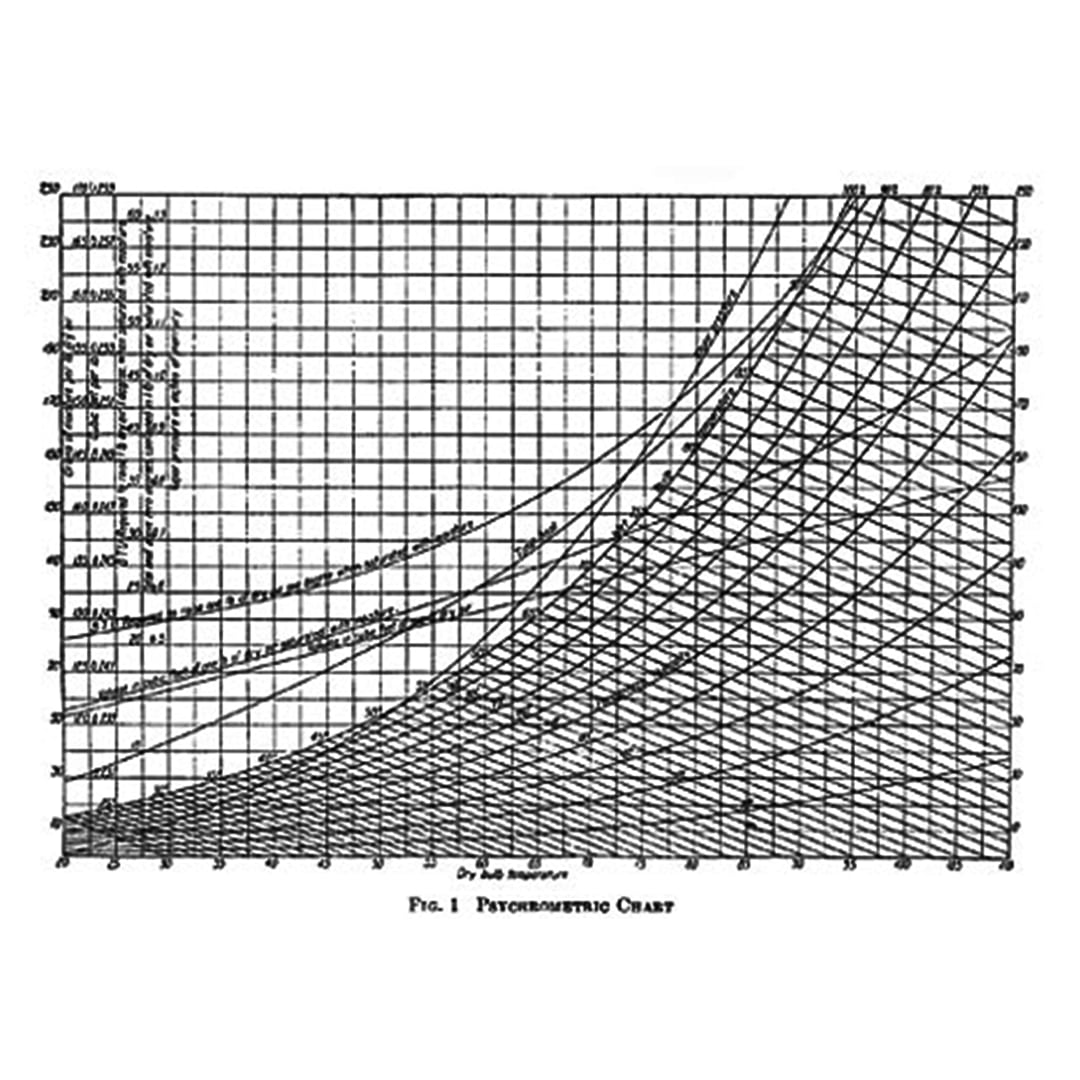
Rational Psychrometric Formulae & Chart
Willis Carrier’s Rational Psychrometric Formulae brought science to what had been the often hit-or-miss design of air-conditioning systems, in the process making Carrier an international name. The chart would be updated and reprinted regularly, serving as an essential tool to generations of engineers.
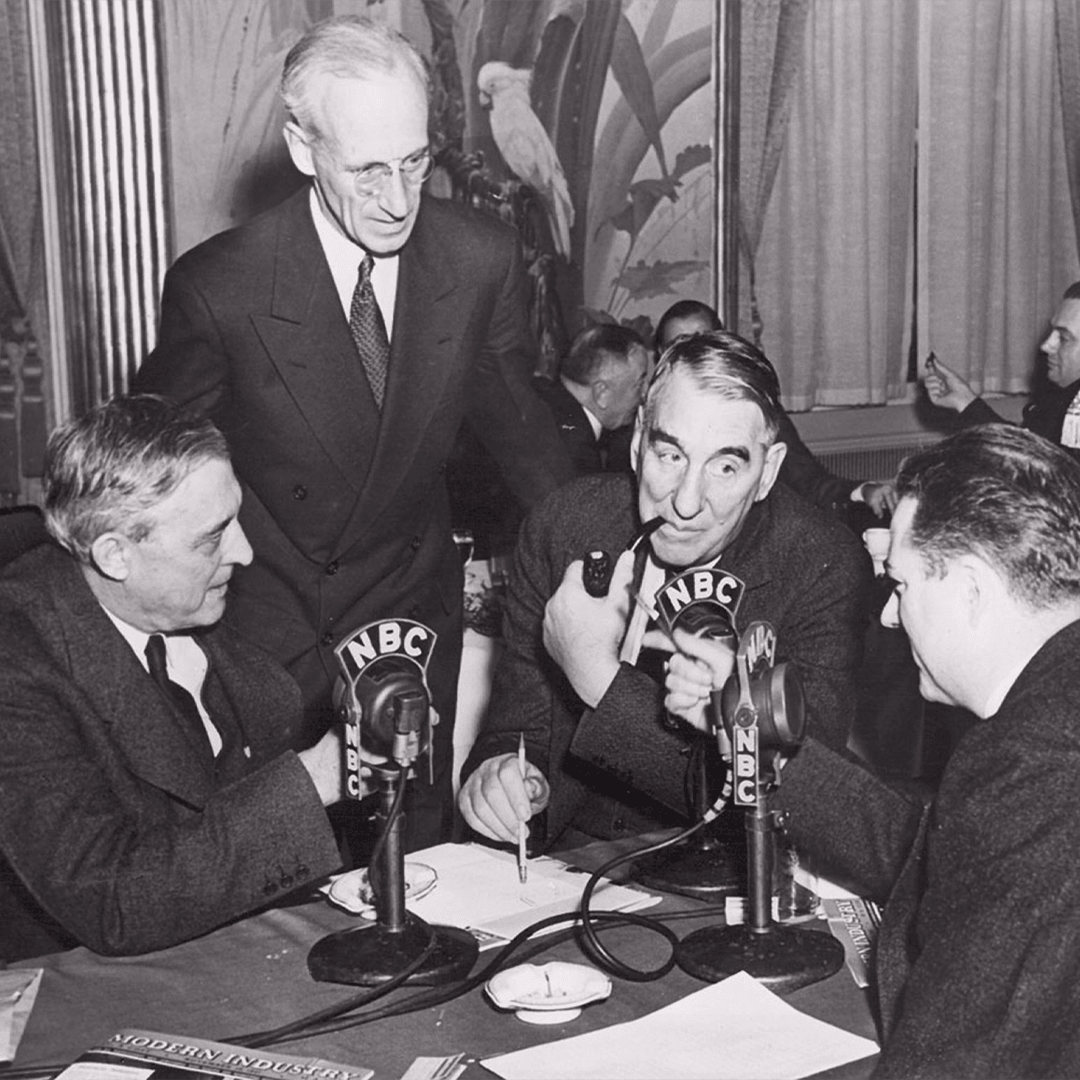
NBC Radio Interview
Carrier Corporation was a prominent industrial leader during World War II. Here, Willis Carrier is interviewed by NBC Radio about his company’s wartime operations.
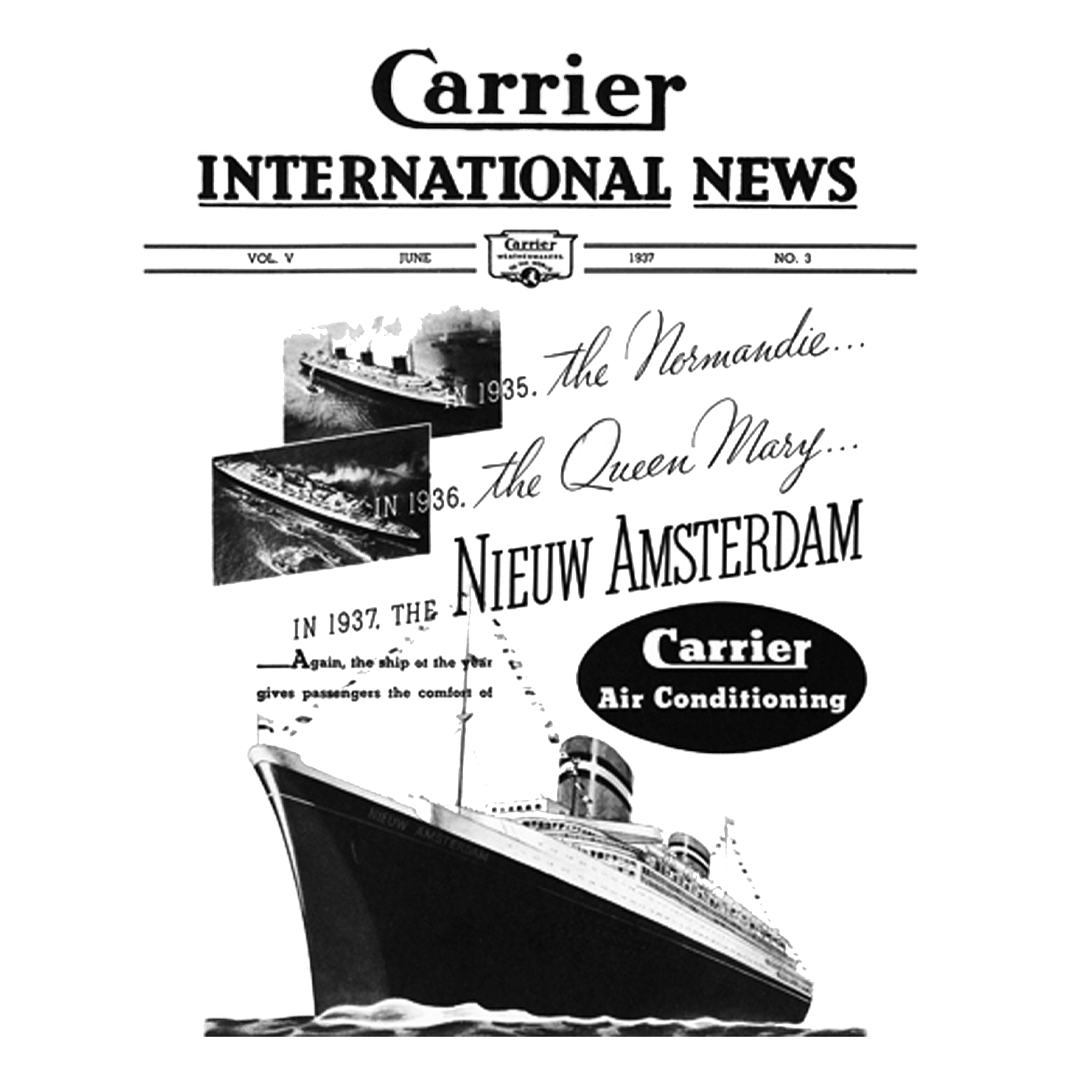
S.S. Nieuw Amsterdam
When launched in 1937, the S.S. Nieuw Amsterdam was the largest liner ever constructed in the Netherlands and boasted the largest Carrier air-conditioning installation ever afloat.
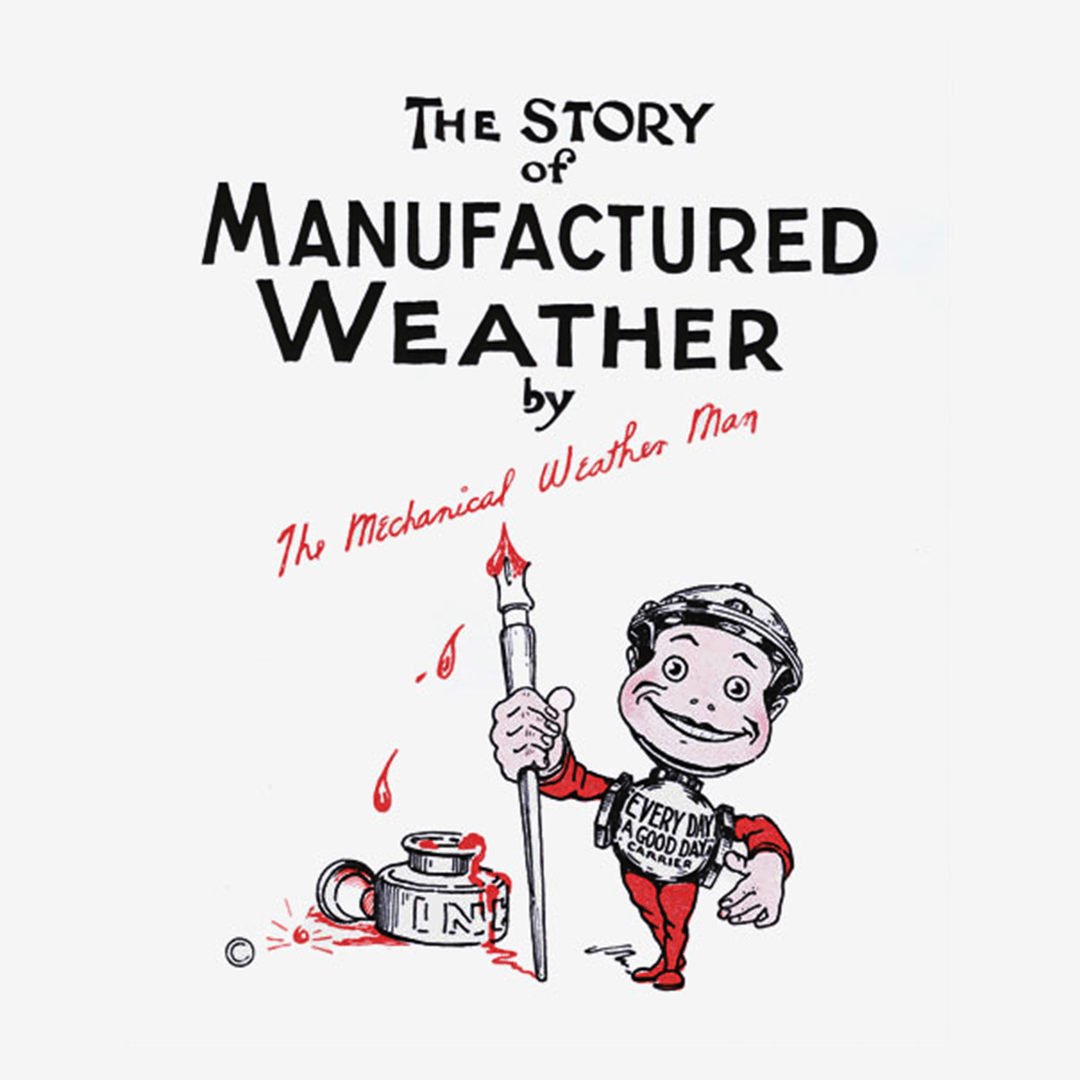
The Story of Manufactured Weather
The Mechanical Weather Man authored his own book (with an assist from Carrier's President J. Irvine Lyle) in 1919, demonstrating the benefits of Carrier's modern air conditioning in dozens of industries.
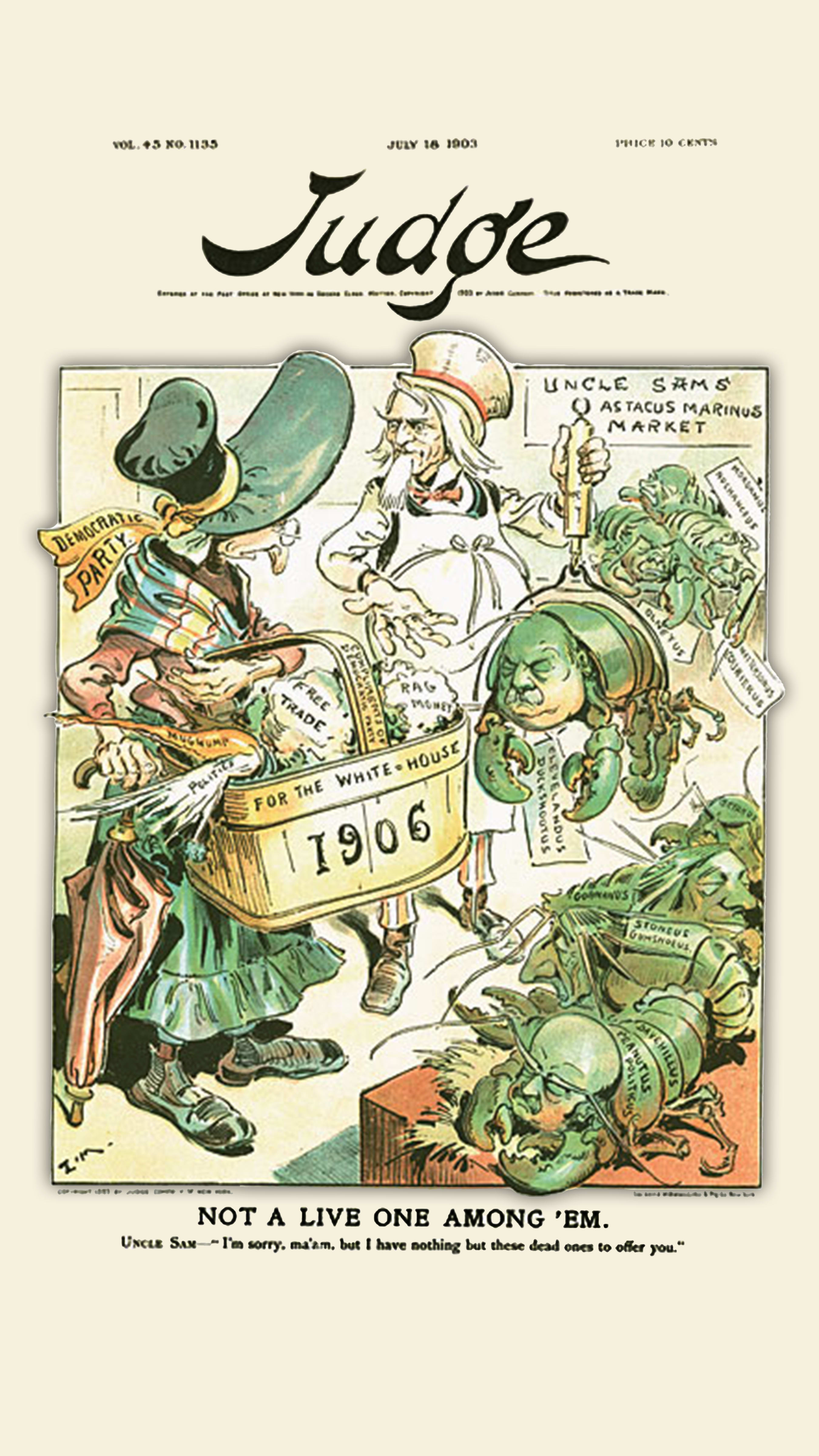
Judge Magazine
This beautiful, multicolor edition of the July 18, 1903, Judge magazine was among the first commercial products ever to benefit from modern air conditioning. Willis carrier's invention would soon be embraced by a variety of other industries worldwide, including textiles, rubber, confectionery and pharmaceutical.
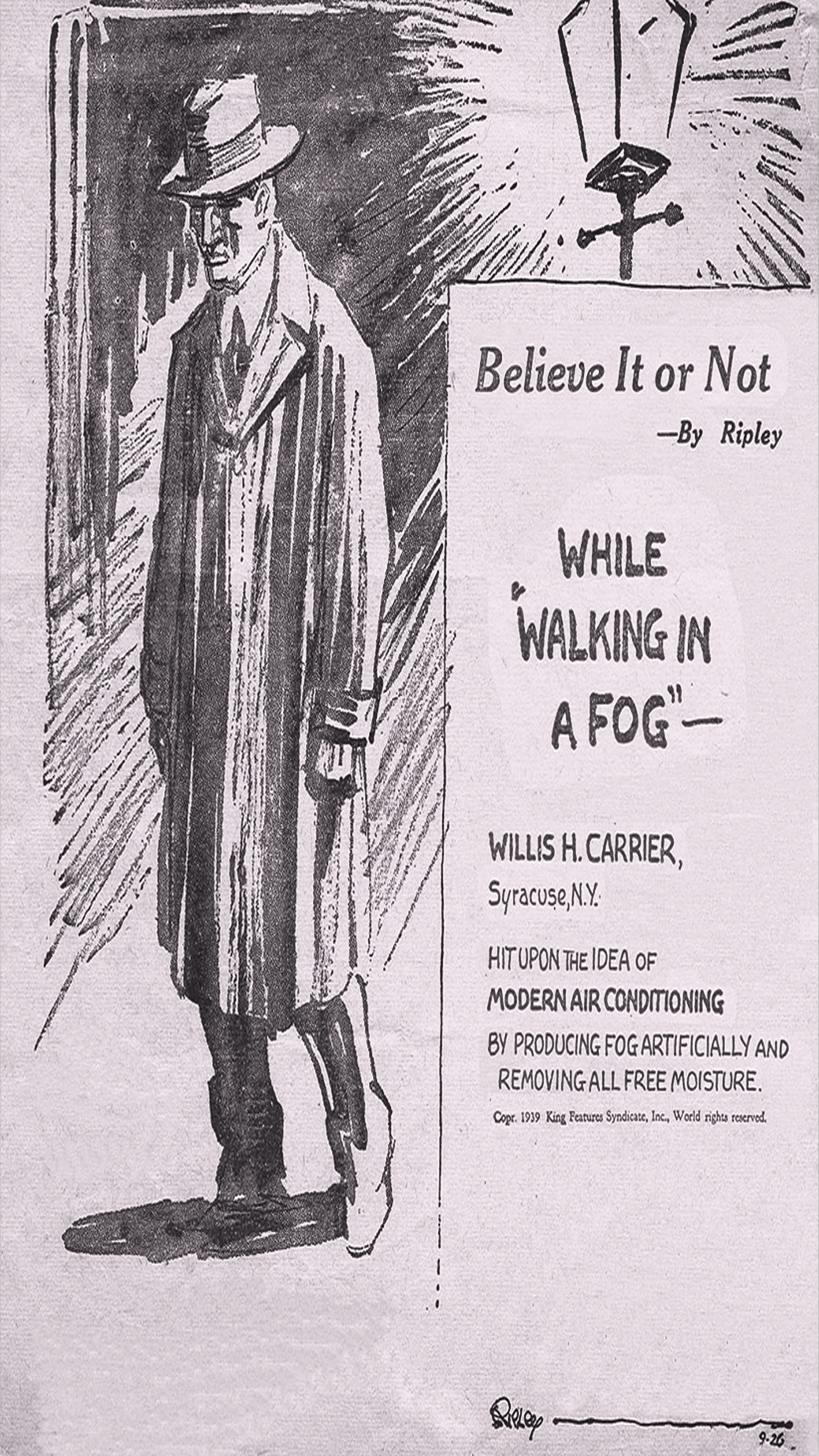
Ripley's Believe It or Not!
In 1939, Ripley's Believe It or Not! featured Willis Carrier's astounding insight—to dry air by producing artificial fog—conceived as he paced through the natural fog of a Pittsburgh railroad station. Some 80 million readers of Ripley's had their first glimpse of the father of modern air conditioning.
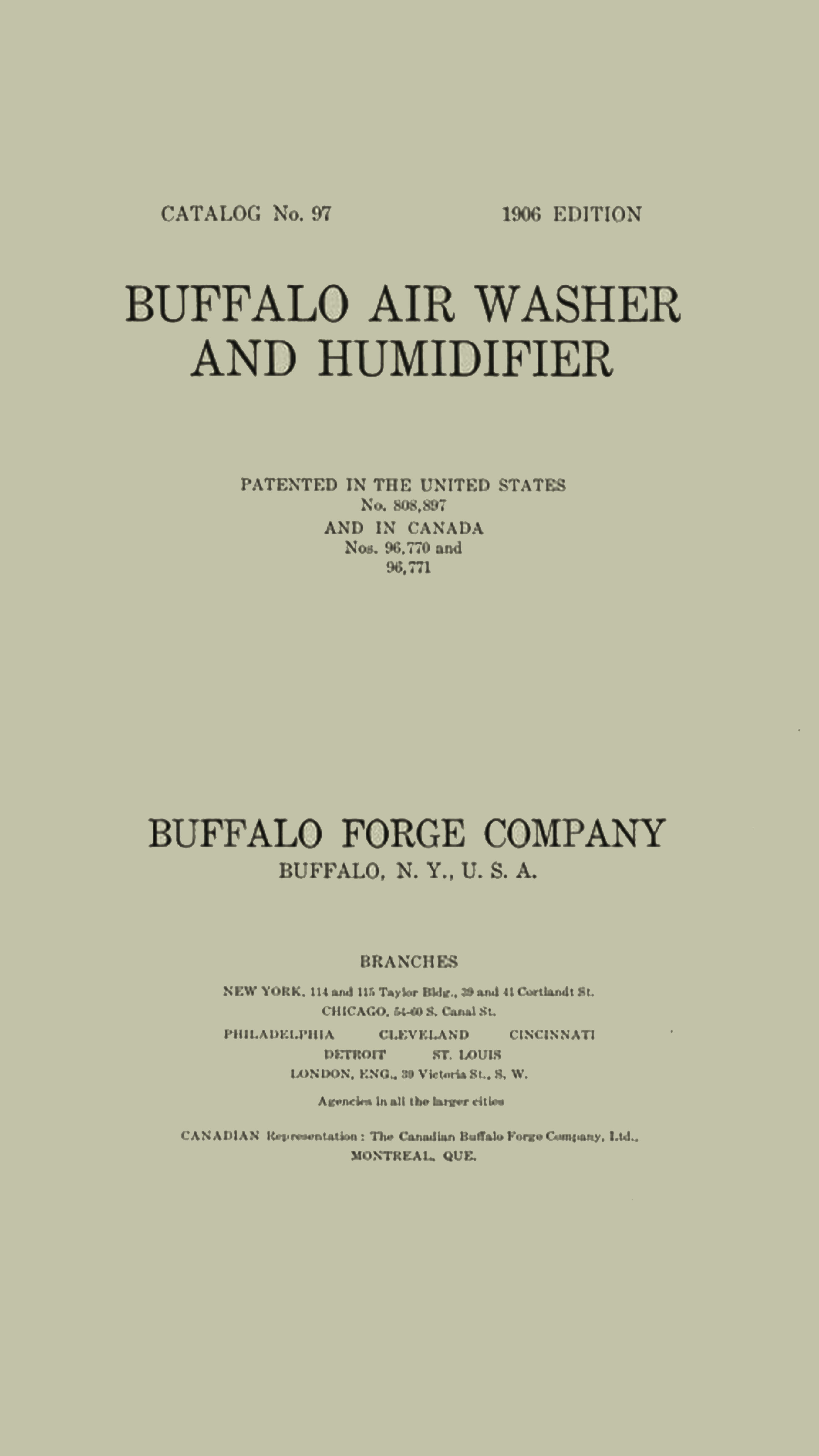
Buffalo Air Washer & Humidifier
It took little time for Willis Carrier and his engineering team to turn insight into a commercial solution. The Buffalo Forge Company soon became a leading supplier of air washers and humidifiers to a variety of industries around the world.
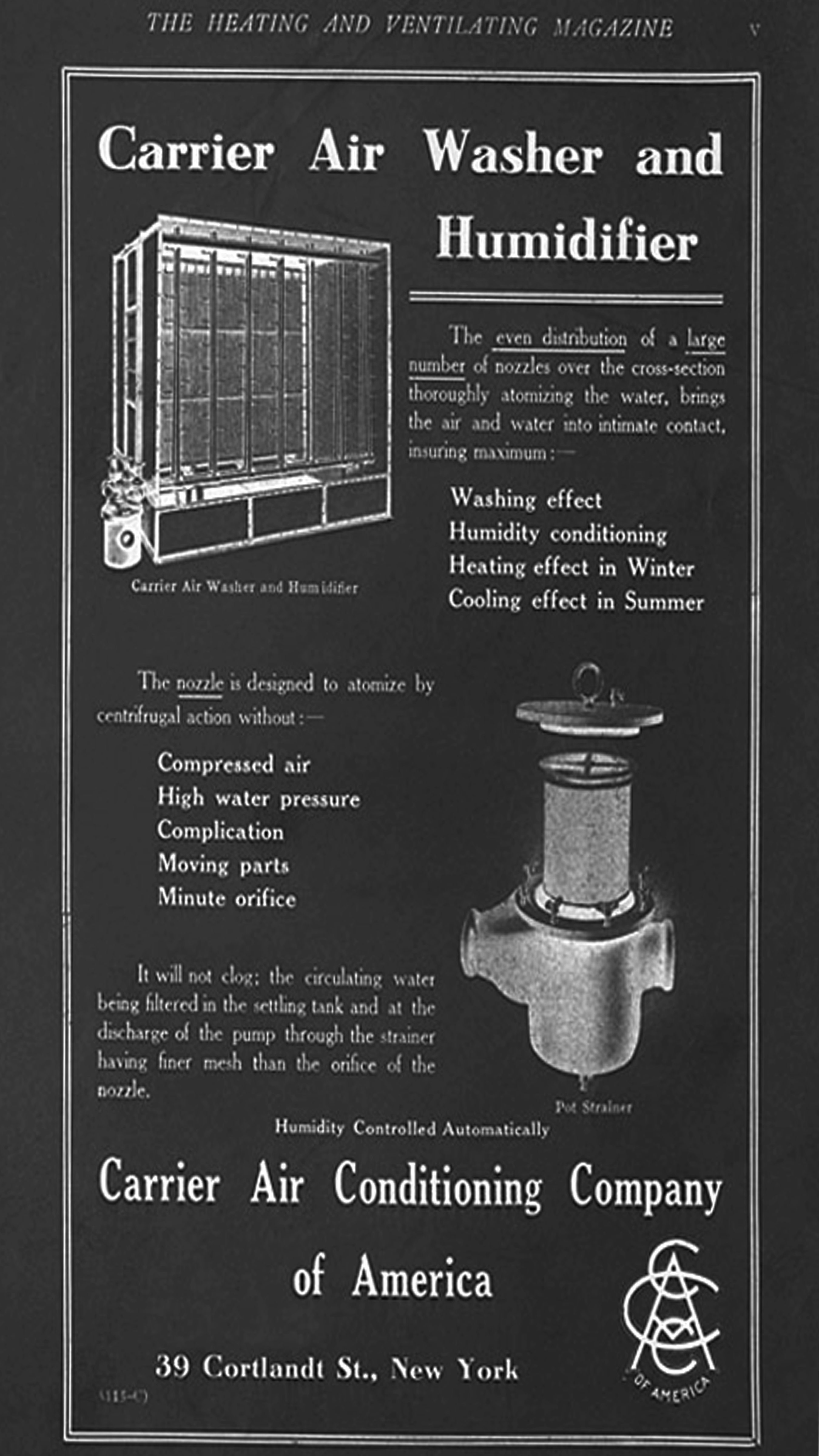
Heating & Ventilating Magazine
The Carrier brand became synonymous with innovation and quality from its launch in 1907.
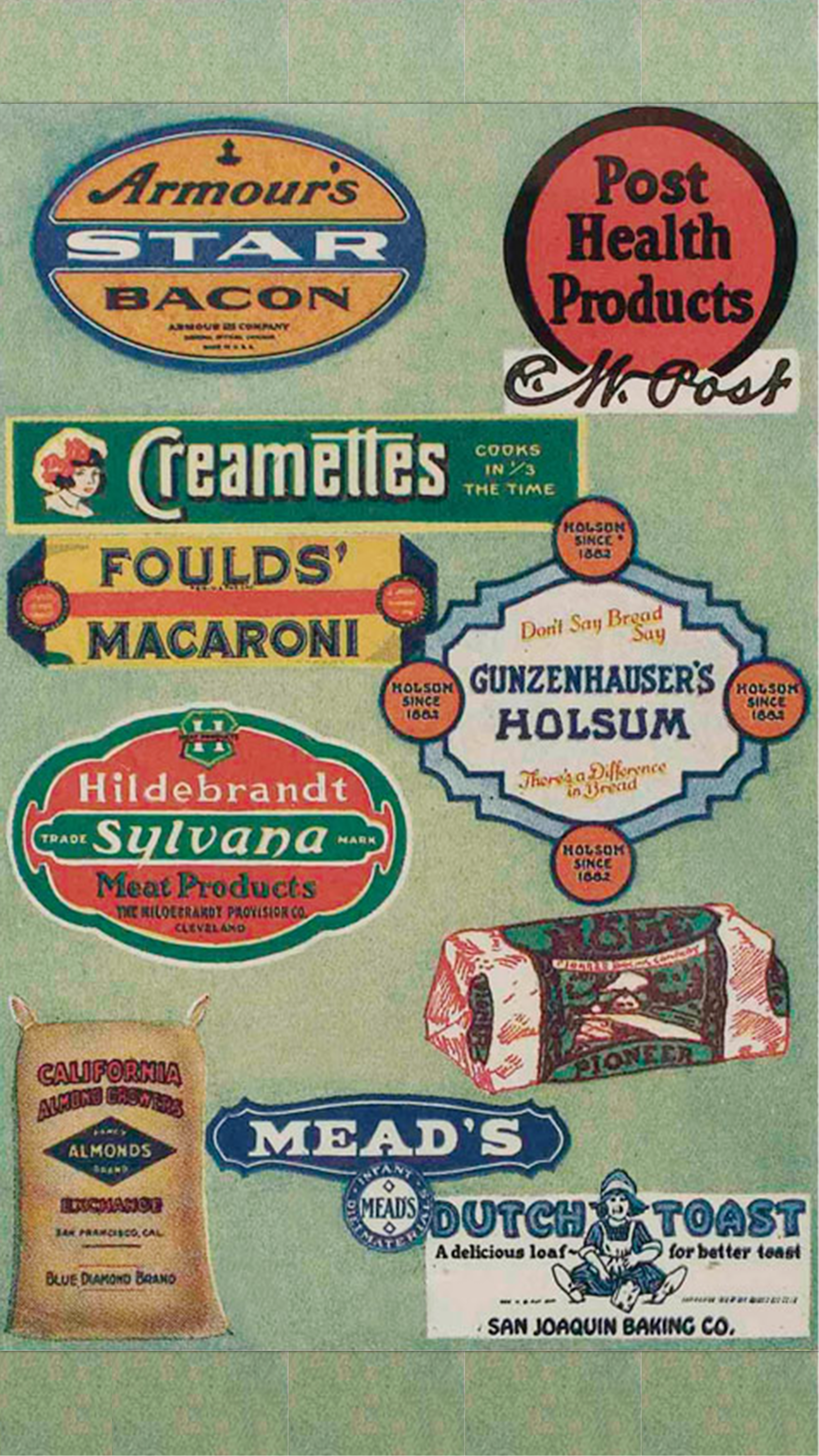
Improving the Food Supply Process
Food processing was undergoing enormous improvements in the early 20th century, and these logos of Carrier customers indicate that modern air conditioning was an indispensable part of that process.
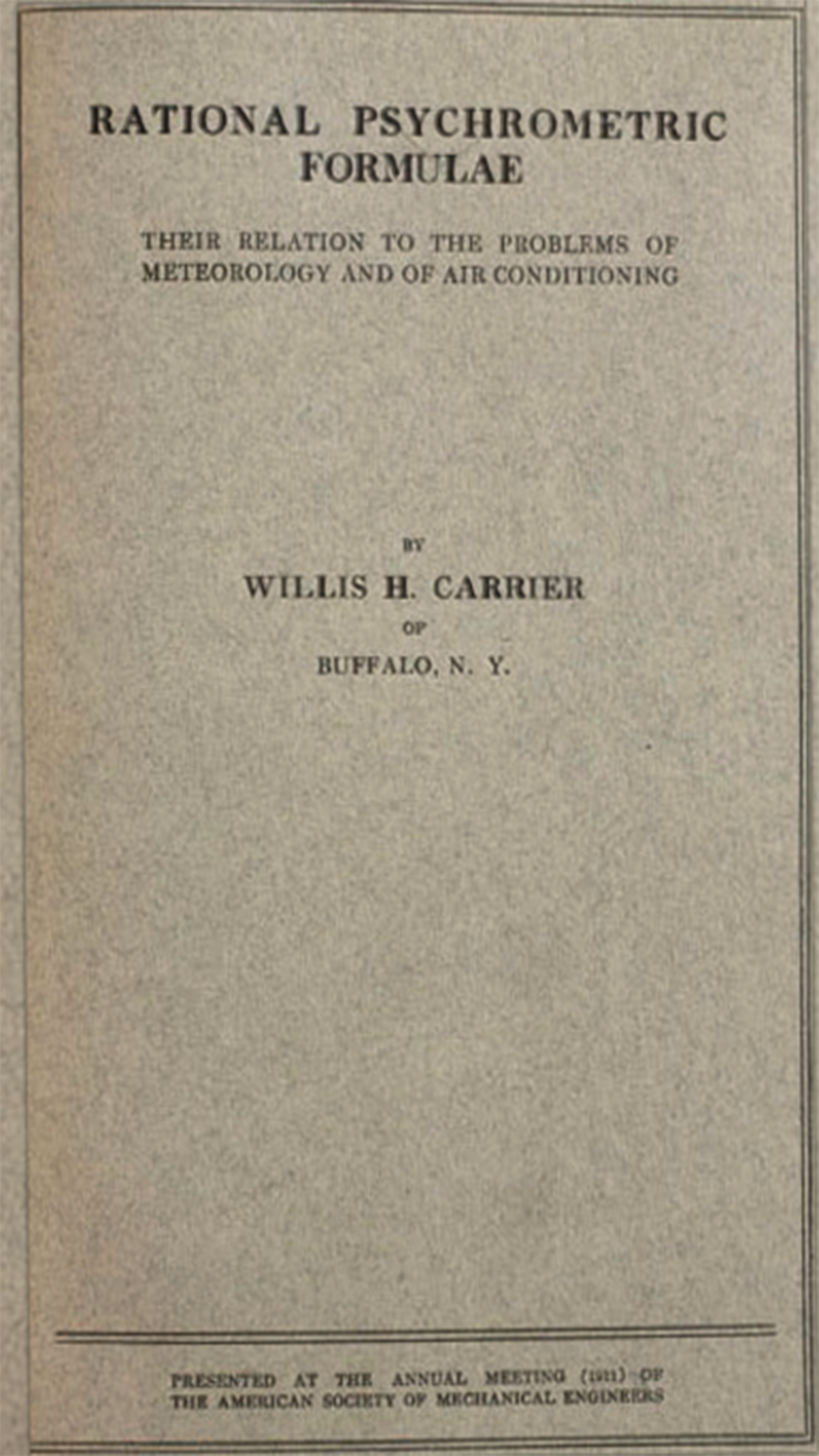
The Complete Book on Air
By 1914, Willis Carrier completed an ambitious project to create a "compact, concise, and complete book on air" from which engineers could "design, specify, sell, buy, service, or operate the equipment that handles air." Carrier's work became the definitive text in the air-conditioning industry.
